Pomona President Gabi Starr inducted into the Academy
Pomona College President G. Gabrielle Starr ofcially joined the ranks of the American Academy of Arts and Sciences at an induction ceremony Sept. 9 to 10, following a year’s delay due to COVID-19.
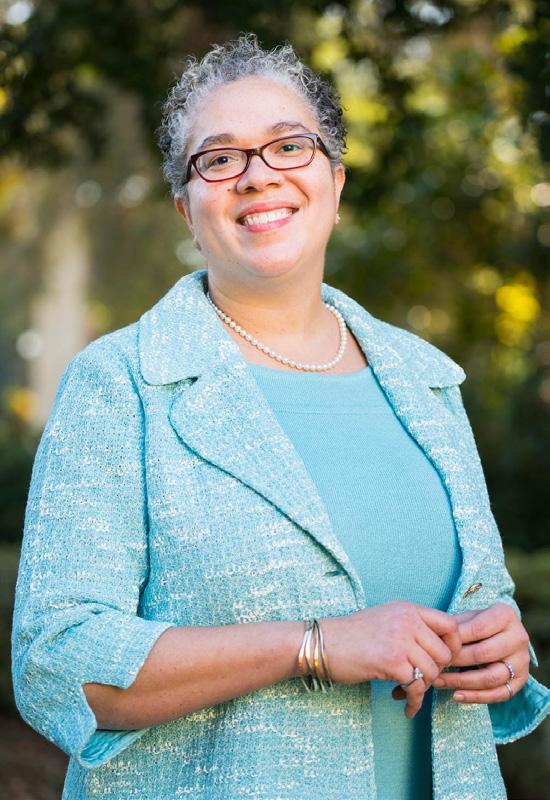
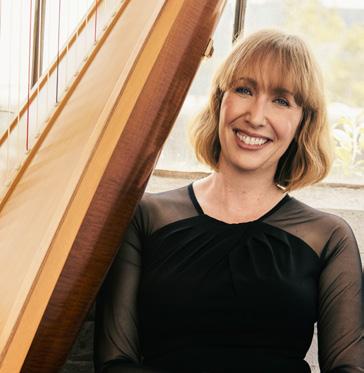
Based in Cambridge, Massachusetts, the Academy was founded in 1780 during the American Revolution by John Adams and other Founding Fathers who believed a new republic needed institutions to gather and advance knowledge for the public good.
The Academy is currently led by Starr’s predecessor at Pomona, David Oxtoby, who served as the college’s ninth president. Among the earlier inductees, Academy members range from Oprah Winfrey, Charles Darwin, Martin Luther King Jr., Nelson Mandela, Stephen Hawking and Condoleezza Rice.
An acclaimed scholar of English literature and neuroscience, as well
Pitzer’s CASA to expand program after $250,000 anonymous donation
MOLLY MURPHEY & JANE SHVARTSMAN
A recent $250,000 donation to Pitzer College’s Critical Action and Social Advocacy (CASA) program will boost collabora tions between Pitzer students
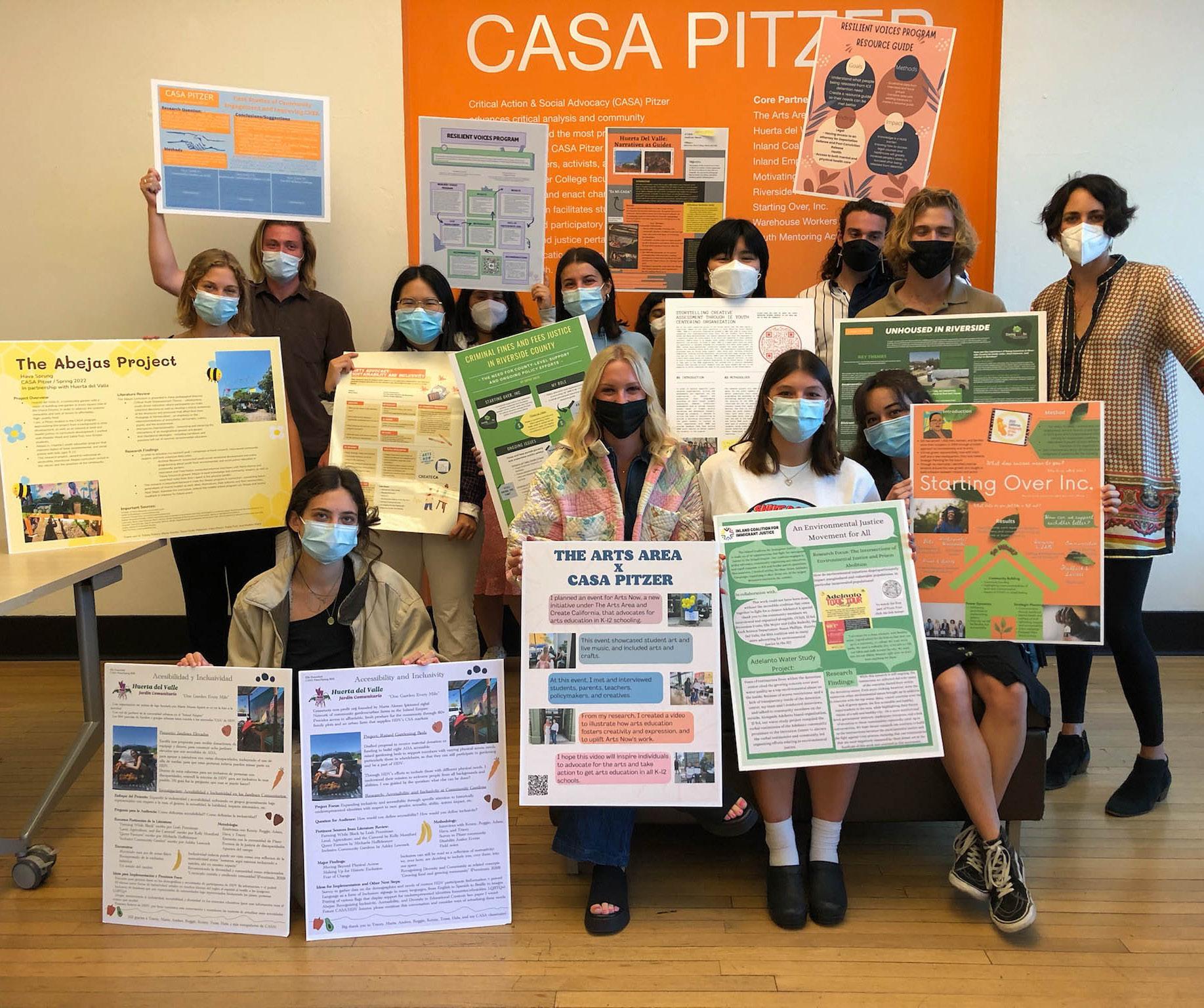
and social justice groups in the Inland Empire region.
On Sept. 12, Pitzer’s Ofce of Communications announced in a press release that CASA received a $250,000 pledge from an anon ymous donor to be divided in annual installments over the next
fve years.
Through courses and a phys ical space in downtown Ontario, CASA connects local residents and nonprofts with 5C students and Pitzer faculty, according to the program’s website.
5C students participating in
the program take two CASA cours es concurrently, along with a 125hour internship with partnering organizations. These groups range from Huerta Del Valle, a group that works to establish community
on page 2
JAKE CHANG, JULIA SCHWARTZ & JOHN PAUL FERRANTINO
Last weekend, Pomona Col lege’s student-run Judicial Coun cil (JBoard) hosted its annual fall training, where new and return ing panelists went through mock cases and training sessions with a restorative justice framework, aimed to prepare them for en acting sanctions in real hearings.
Functioning as Pomona’s dis ciplinary system, JBoard hears cases of alleged violations of the Student Handbook, according to its website. The board is com posed of four chairs and about 40 panelists that act as a jury to determine violations of college policy as well as appropriate sanctions.


In action at the 5Cs, a re storative justice framework en courages student autonomy when promoting and enforcing community standards. However, there has been a recent push to expand these types of measures, which would include hosting roundtable discussions about proposed changes to the student
handbook’s amnesty policy.
For its latest Sept. 24 training, JBoard brought in restorative justice expert Dr. Rachel King to further infuse its framework into the coun cil’s work. King is an experienced facilitator of this type of training, with a specialization in harassment and misconduct in higher education.
Exercises involved the students recognizing implicit bias and apply ing it to a mock case about a physical altercation and possible trespassing at Oasis KGI Commons. Panelists were encouraged to question current disciplinary policies, according to JBoard associate chair Stephen Fatuz zo PO ’23, who said he was pleased with the level of student engagement in the training.
“[The panelists] asked really good questions,” Fatuzzo said. “We love when our panelists sort of probe and go a litle deeper and ask questions about, ‘OK, this policy exists, but why?’”
JBoard hosts a training every semester, with its principal training in the fall. This includes a mock case that serves to acquaint panelists with disciplinary policies, policy vi
See
Losing? What’s that? The unde feated Athena’s women’s volley ball team doesn’t know. Clare mont-Mudd-Scripps defended their homecourt and kept their perfect record untouched last Friday when they beat Occiden tal 3-0 at Roberts Pavilion. Read more on page 9.

College
have a lot to worry about, but fnding period products shouldn’t be the cause of their panic, argues Zeean
dread, code switching: This year’s student research symposiums at Pomona, Scripps and Mudd
SERENA LI, SARA CAWLEY & RYA JETHA
Where can you learn about monitoring seabirds in the Gulf
of Maine, Asian American music and soccer in the city of Pomona?
At Pomona College, Scripps College and Harvey Mudd College, students presented
Research symposiums at pomona, Harvey mudd and Scripps offer an opportunity for students to share summer re search projects.
With new funding, CASA pitzer said it will be able to pursue greater opportunities in social work.
COURteSY: SCARLett DUARte
LUCIA STEIN & RYA JETHA
COURteSY: pOmONA COLLeGe
As an inductee into the Academy, Starr continues to bolster educational efforts for accessibility and equity.
FLOReNCe pUN • tHe StUDeNt LIFe
their summer work at events celebrating these college-
The student newspaper of the Claremont Colleges since 1889 INDEX: News 1 | Arts & Culture 4 | Opinions 7 | Sports 9 FRIDAY, SeptembeR 30, 2022 CLAREMONT, CAVOL. CXXXIV NO. 2 ARTS & CULTURE OPINIONS SPORTS Pomona’s JBoard hosts annual fall training with restorative justice focus PO HMC CMC PZ SC ** 0 252015105 Student Staff Undifferentiated +23 cases TSL COVID-19 Tracker covid.tsl.news at the 5Cs from September 18 - 24 Scripps is no longer reporting COVID-19 data +12 +8 +3 +10 ** Data from each of the 5Cs school’s testing dashboards at press time. Visit covid.tsl.news for the most up-to-date testing infomation and historical data +2 * * HMC has not provided numbers this week She’s worked with the likes of Madonna and even won a Grammy, but harpist Alison Bjorkedal says being a Pomona lecturer has been one of her most exciting experiences yet. Read more on page 5.
students
Firmeza PO ’26. Read more on page 7. UNItY tAmbeLLINI-SmItH • tHe StUDeNt LIFe Basque Country, existential
JBOARD on page 3
See CASA
See STARR on page 3 See RESEARCH on page 2
CASA: Donation supports local organizations, funds new scholar-in-residence
Continued from page 1 me, who was gonna go back to college half a year later.”
gardens, to Warehouse Workers Resource Center, an advocacy organization championing beter working conditions for those in the warehouse industry.
In previous years, CASA pro gram manager Scarlet Duarte said the program had a “really small budget,” which limited the scope of the program’s achievements.
CASA mostly relied on small grants secured by CASA Director Tessa Hicks Peterson, Duarte said.
The new donation creates great er opportunities to expand the program’s reach and impact on the surrounding community.
“We always do what we can with [our budget], but this opened up the space in a whole new way,” Duarte said.
Duarte said that CASA will use the recent donation to provide stipends to their partner organi zations and funding for a local organizer to work for the program as a scholar in residence.
CASA will also expand its pro gram “No Justice, No Peace,” which provides healing resources to support social justice organiz ers and fund more events in their Ontario space, which Duarte said she hopes will become a space that connects both Ontario and Pitzer’s communities.
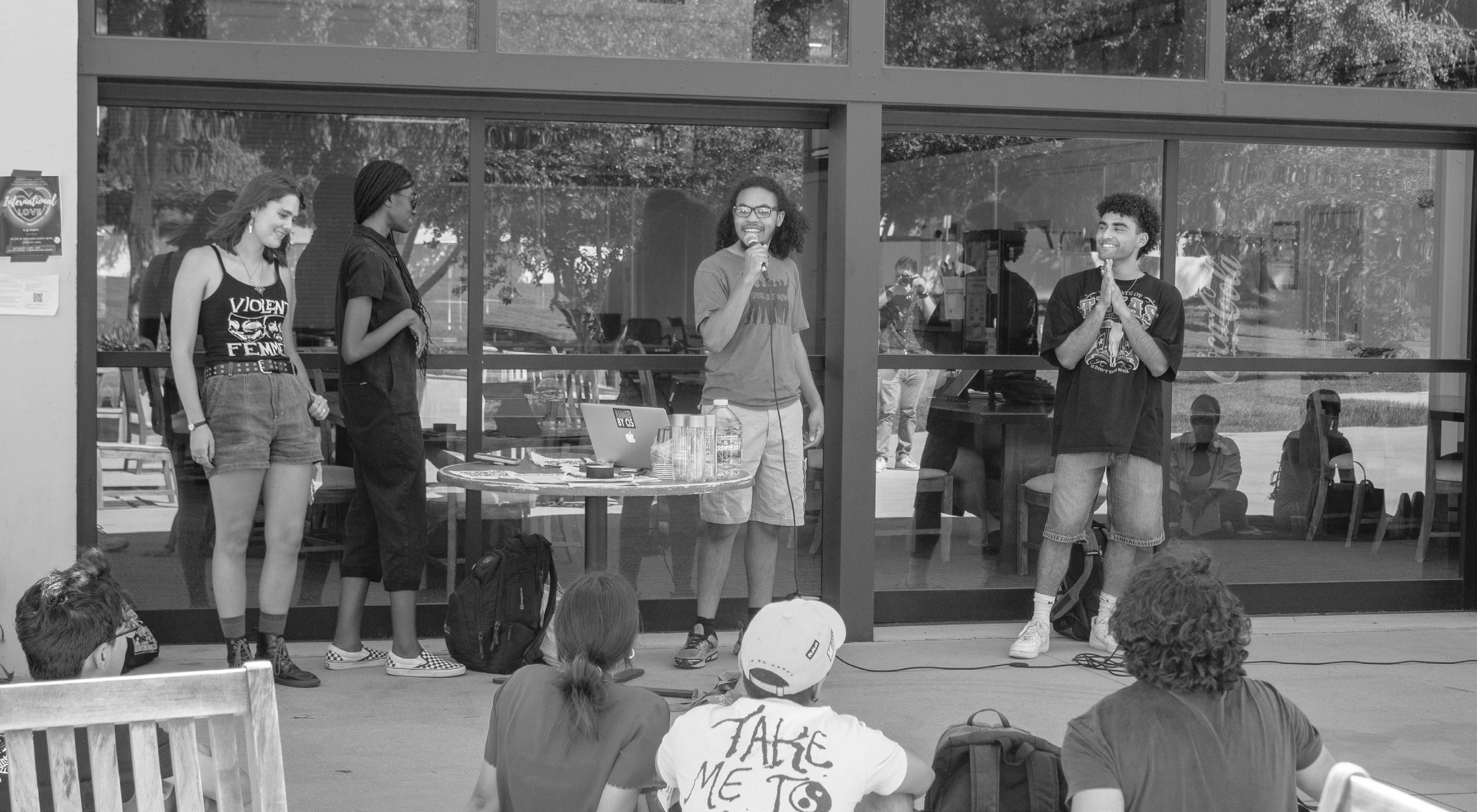
“We wanted to really become a space where the students, fac ulty and staf can come and have meetings or whatever they need to get away from campus. Just really making it like a part of Ontario but also a part of Pitzer,” Duarte said.
Refecting on the new donation and her time at the program, Helen Chirigos PZ ’25, who took the two CASA courses ofered at Pitzer in fall 2021, said programs like CASA have a lot of potential but need to be carefully and respectfully executed.
“When [community engage ment is] a requirement as it is in many classes, I think it ends up being this disingenuous relation ship,” Chirigos said. “Even with CASA, I felt like mentors were taking energy that they could have put towards just doing their work or teaching people who are going to remain a part of the program. They could have been training people like that instead of someone like
Chirigos said that the pro gram could use some of the funds from the anonymous pledge to develop a more re ciprocal relationship with its partner organizations.
“I think the money could be used to fnancially invest in these partnerships that control the change … redistribute that grant money for grassroots [organizations] that know what they need to put it toward,” she said.
For her internship, CASA placed Chirigos with Youth Mentoring Action Network, an organization serving youth of the Inland Empire with “an emphasis on race, ethnicity, class, citizenship, gender and sexuality,” according to the program’s webpage.
To Aditi Madhok PZ ’23, who completed her semester with CASA online due to COVID-19, having more sources of funding for the program is crucial.
Madhok said the program connected her to the Inland Empire and taught her how to promote intercultural un derstanding and community engagement, which has been useful when applying to fel lowships and directly engaging with Claremont’s neighboring communities.
“I thought it was even more critical to have these kinds of partners in a seting in which COVID exacerbated these types of crises, especially for our es sential workers,” Madhok said. “Even though I wasn’t around Claremont, I think it also gave me a little bit of a proximity to what exists in the Inland Empire.”
Madhok said it was import ant for 5C students to get in volved in programs like CASA, be it by directly participating in them or by atending some of their events, such as talks.
“The sooner you do these kinds of programs, the more it forces you to refect and connect some of those frameworks to the realities and limited experiences of communities nearby you,” Madhok said.
RESEARCH: Students express gratitude for college-funded summer passion projects
from page 1
funded projects.
Pomona hosted a weeklong symposium from Sept. 19 through 23 showcasing research and internship projects across 60 disciplines.
“You can’t just be a passive consumer of knowledge,” Associate Dean of the College Pierre Englebert said. “Producing knowledge really helps you learn about scholarship, the academic world and how knowledge is produced — and that’s part of learning.”
At Pomona, summer opportunities were funded via the college’s Summer Undergraduate Research Program (SURP) and the Pomona College Internship Program (PCIP).
Naomi Tilles PO ’22 received funding to pursue a project called “El Derecho a Decidir: The Right to Decide in the Spanish Basque Country.” Tilles spent the summer in Bilbao, Spain, to conduct interviews with leaders from various Basque parties about what self-determination means to them.
Tilles was grateful to have received funding for international research and told TSL she hopes research opportunities for students pursuing international projects will continue to expand as COVID-19 restrictions loosen.
“I understand that COVID restrictions made Pomona decide to not allow [most international research] this year, but I really hope that in two, three years more students will have the opportunity to do that,” Tilles said.
Oluyemisi Bolonduro PO ’23 enjoyed creating “Mirrored,” a creative writing project about her Nigerian nationality and Yoruba roots.
“I think it’s a grand shift when it comes to college pursuits and sends a very
strong message that all types of thought can be funded and supported,” Bolonduro said.
Pomona provided stipends of $3,000 to over 150 students this summer. Englebert, who leads student research at Pomona, is working to expand funding for summer opportunities.
“We’re doing fundraising, and we hope to be able to fund even more,” Englebert said. “We hope to be more generous — we want to make sure we provide fair opportunity.”
Scripps also showcased student research over afternoon tea on Sept. 21.
“Having ownership of their scholarship encourages students to see themselves as independent scholars, provides them with key training and gives them the necessary skills and confidence to apply to top graduate schools and/or a position previously considered out of reach,” Associate Dean of Faculty Jennifer Armstrong said via email.
Students who received summer funding submitted a report, presented posters over tea at Seal Court and created a video for Instagram.
Mirabella Miller SC ’24 received summer funding through Scripps’ Esterly Award, which supports what would otherwise be an unpaid internship. It also provides access to independent summer research projects or collaborating with a professor on research over the summer. Miller pursued a project called “Dystopian Sweetheart,” spending the summer creating a podcast and website.
“I explored young women’s online presentations and how they relate to existential dread,” Miller said. “I was interested in pursuing [this project] because it felt very relevant to my life, and it was something I encountered daily on social media.”
Miller said the process of receiving funding was straightforward and accessible.
“I filled out one form to
apply to multiple different funds,” Miller said. “And then as the deadlines for funds passed, [Scripps] let me know what I did and didn’t get.”
Nina Howe-Goldstein SC ’25 received summer funding from Scripps through the Mellon Interdisciplinary Humanities Initiative to research Morris Cafritz, the largest real estate developer in Washington D.C. from the 1920s to the 1960s.
Howe-Goldstein said she wishes the Scripps administration had provided more guidance to students doing research over the summer.
“It confused me that very little was seemingly asked of us in the end,” Howe-Goldstein said. “It’s interesting to look at the way Scripps quantifies the deliverable products of this research.”
At Harvey Mudd, students presented their summer research Sept. 22 at an in-person poster session at Hixon Court.
As part of their Summer Undergraduate Research Program, Harvey Mudd student researchers completed 10 weeks of faculty-sponsored research spanning disciplines from biology to computer science. Each summer, close to 200 Harvey Mudd students pursue projects alongside nearly 40 faculty members across every department of the College, according to Harvey Mudd’s website.
Lilian Zhu HM ’26 conducted a project titled “Code Switching: Semantic Density and Programming Language Learnability.” Zhu felt that the summer research experience gave ample opportunities to explore code switching from different angles.
“I got to learn other areas of computer science that other students were researching through weekly CS chats with everyone,” Zhu said via email. “Professor Bang and everyone else were very supportive throughout the whole summer, and my experience has ignited my passion for math and computer science.”
Climate strike rally encourages 5C students to ‘Speak Out’
the attendees that they were not alone in fighting climate change, according to Gonmiah.
In solidarity with over 500 Climate Strikes happening worldwide, dozens of students from across the Claremont Colleges gathered last Friday at Pomona College’s Walker Beach to participate in a climate strike rally and share their personal experiences with climate change.
Bradley Gonmiah HM ’23, a member of the national group Speak Out Now, organized the rally with the help of students from the other 5Cs.
Speak Out Now is a “revolutionary socialist organization” with members in the Bay Area, New Jersey and other cities across the United States, according to their website.
Activist Greta Thunberg’s Fridays For Future campaign inspired Gonmiah to host the rally. The organization called for a Global Climate Strike on Sept. 23 to “demand policymakers and world leaders to prioritize #PeopleNotProft,” according to their website.
The goal of the rally was to show
“I think a lot of times, people can get kind of bogged down and feel as if it’s a personal problem, even though this is a really global issue,” Gonmiah told TSL.
The rally was held in a “speak-out” format that Gonmiah learned about after reading the book “Without Apology: The Abortion Struggle Now” by Jenny Brown. The book presents the history of the fght for abortion rights in the United States, discussing how abortion activists hosted “speak-outs” where people gathered to share their personal experiences with abortion.
“Even though there were a lot of women that were facing the issue, they didn’t talk about it,” Gonmiah said. “So speak-outs really served as a mode to turn the personal into the social. And then when it’s social, it can be political, and when it’s political, that means you can do something about it.”
Angel Daniel-Morales PO ’23, who emceed the event, enjoyed the format of the rally.
“It felt good hearing people speak. It was nice encouraging people who are a litle more shy to talk,” DanielMorales said. “We’re all organizers, even those who think they’re not. It’s important to get everyone’s voices.”
At the rally, people shared personal experiences with climate change, as well as hopes for the future.
Jocelyn Ruelas CM ’23 spoke afer some encouragement by DanielMorales.
“Environmental racism is real, guys! I’ve lived by the plants, by the sewage, and it afects us!” Ruelas said. “I just want to be, before I leave this Earth, someone who uses my voice to make a change.”
Cameron Quijada SC ’25 described the effect of wildfires in her hometown of Temecula, California.
“I’ve grown up around forest fres, but they usually only happen
around once every four [or five] years,” Quijada said. “And then three weeks ago my mom sent me a picture, and it was a fre about three miles away from our house, and they were packing up our house geting ready to evacuate.”
Daniel-Morales spoke about seeing overgrowth and trash in the woods during his walks in rural Pennsylvania.
“I think about the Indigenous people who used to inhabit that land, who knew how to take care of that land, and how we’re living in an apocalypse where those people were killed,” Daniel-Morales said.
“I think sometimes in climate crisis discussions, we forget to mention the people who know how to care for the land.”
Matiaslan Ceccarelli PZ ’23 shared the song “All That We Perceive” by Thievery Corporation and encouraged atendees to close their eyes and sway to the music.
“We see in color. We see in magic,” Ceccarelli said. “So why are we here?
… We’re here because we care about each other [and] our mountains [and] our rivers.”
Afer opening the foor for people to speak to the crowd, organizers passed the microphone to each student to introduce themselves and their hometown and discuss the impact of climate change there.
“We’re here right now in Claremont, but we’re connected to so many other places, right?” Gonmiah said.
Gonmiah wrapped up the gathering by promoting future Speak Out Now events, including a Q&A on Sunday with Jenny Brown, the author of “Without Apology.”
Tsion Mamo SC ’23 enjoyed hearing about the diferent yet connected issues afecting each person’s hometown.
“We’re all from diferent places, so something that’s relevant to you I won’t know about, not because I don’t care — but you can tell me, you can let me know about it,” Mamo said. “You don’t have to learn from the school. You can educate each other.”
FLOReNCe
StUDeNt
members of Speak Out Now and rally attendees share personal experiences facing the climate crisis.
pAGe 2 SeptembeR 30, 2022New S
REIA LI
pUN • tHe
LIFe
Continued
JBOARD: Students aim to balance code with restorative justice
olations and sanctioning dilemmas.
Continued from page 1 the community,” Bukhart said. “That’s where the sanctions come in. We try and focus our sanctions, making sure that they have gained respect for the community.”
A panelist since fall 2020, Jon Bukhart PO ’24 said JBoard’s frame work ofen puts panelists in a po sition where they need to balance following the student code with pursuing restorative justice.
“How I see it, our function is not to separate people from the commu nity or ostracize them from the com munity or punish them, it’s more just to strengthen their relationship with
The Student Handbook includ ed punishments like fines until 2021, when the Judicial Council removed them from the Handbook.
“We ofen talk about restorative justice as restoring the respondent, the person who has violated the code, but we can also think about restorative justice in the sense of
restoring the community,” Fatuzzo said.
For example, a sanction could include working with Pomona’s maintenance crew for a day so “they have an idea of all the people here that make the college what it really is,” Bukhart said.
In discussing goals for this coming semester, Fatuzzo will be leading a weekly working group that discusses the role restorative justice will play in JBoard.
“Particular goals will be: Can
Harvey Mudd among 500 leaders advocating for accessibility in Computer Science
MARCELLA TODD
As technology continues to be come a more predominant aspect of everyday life, Harvey Mudd College has joined over 500 CEOs, university presidents and nonproft leaders in asking U.S. governors and education leaders to provide computer science (CS) learning opportunities for all students.
On July 12, HMC President Maria Klawe signed an open leter organized by national nonprofit Code.org, which calls for states to update their K-12 curriculum to include computer science courses.
Citing studies that show how students with a computer science background outperform in school, university and their careers, the leter urged school ofcials to make CS courses “a basic part of the new normal” as schools in the Unit ed States rethink their education models following the COVID-19 pandemic.
“The United States leads the world in technology, yet only 5 percent of our high school students study computer science,” the leter said. “How is this acceptable? We invented the personal computer, the internet and the smartphone. It is our responsibility to prepare the next generation for the new Amer ican Dream.”
In response to the letter, the National Governors Association created the Governor’s Compact To
Expand K-12 Computer Science Education. In it, 50 governors pledged to increase the number of schools ofering computer science classes, provide more funding for the discipline and create career opportunities for those entering the feld from historically under represented communities.
By signing the letter, Klawe joins hundreds of education ad vocacy leaders who are asking for computer science to be part of all schools’ curricula, including university presidents and CEOs of nonprofts and tech companies such as Meta and Apple.
Klawe told TSL one of the most signifcant impacts the leter could have is increasing diversity in STEM fields like computer science.
“I really believe that it is im portant to provide access to this for everybody … It’s an advantage for everyone,” Klawe said.
As president of Harvey Mudd, Klawe has been part of various eforts to increase diversity in the college, including transforming HMC’s student population from 30 percent of the student body identifying as female in 2006 to around 50 percent in 2022. Last year also proved to be the most diverse HMC class, with 70 per cent of domestic admitees being students of color.
To Klawe, the diversity at Har vey Mudd is the school’s strength.
“That’s what’s diferent from many other places is the diversi ty of the graduates in computer science refect the diversity of the student population overall [at Harvey Mudd],” Klawe said. “We’re half female, but we also have a significant number of Hispanic, Latinx and Black stu dents graduating from computer science.”
CS major Hayley Walters HM ’25 told TSL that advocacy for more K-12 opportunities — such as the eforts of the leter signed by Harvey Mudd — is important to increase diversity.
“People will say, ‘Oh, well, women have the free choice to be a CS major if they want to. They just don’t because they’re not naturally inclined that way,’” Walters said. “But that’s not the truth. It’s because men have more pre-college experience than women.”
While acknowledging eforts made in gender diversity at Har vey Mudd, Walters said there’s plenty of room to grow in terms of representation as an area for improvement.
“I hear it’s beter than other places in terms of racial diversity, but it’s still not good,” Walters said. “There’s very few people that are Black or [Latinx]. Those are probably the two most un derrepresented groups in CS classes at Claremont.”
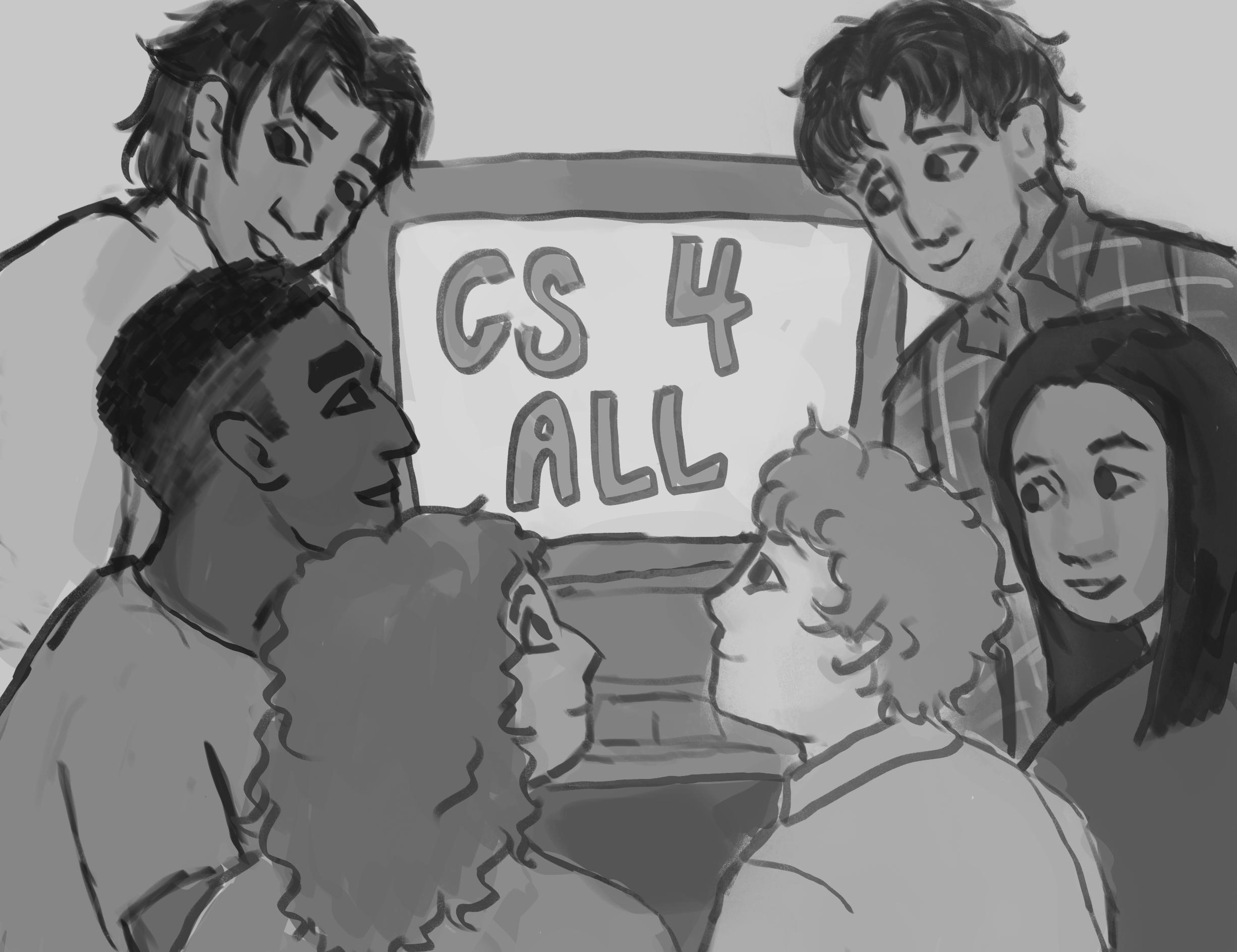
we come up with an institutional defnition for restorative justice?” Fatuzzo said. “How can we write that down in a way that, from panel to panel, will still be applied evenly? And then another question is, how do we codify that?”
JBoard is also launching a peer mediation program in November afer three years of development. This will serve as a pathway for alternative resolution from com plainants and respondents.
Incorporating restorative justice
into JBoard’s disciplinary policies comes with the mission of changing the institution’s image to one of “trust and respect,” Fatuzzo said.
“We want to be an institution where if a student violates a policy, they come to us and feel as though we’ll take what they say seriously,” Fatuzzo said. “We will work on a sanction if necessary that keeps their education in mind so that they would come away from that hearing and say, ‘OK, I understand. I understand why I shouldn’t have done that.’”
STARR: Academy gains three Sagehens
Continued from page 1 as a former dean at New York University’s College of Arts and Science, Starr was elected into the Academy in 2020 for her work in leadership, policy and communications with a specialty in educational and academic leadership.
“Several people said that one of the things they found notable was work that I’ve done on prison education,” Starr said, referencing the cross-university prison education program she created that ofers degrees in liberal arts to students in a medium-security prison.
In addition to this work, Starr facilitated a partnership while at NYU with New York City’s largest community colleges to create an educational pipeline to future STEM careers.
“In general, in everything that I try and do — whether it’s raising money, whether it’s helping to produce new programs — it’s about trying to forge collaborations in diferent kinds of places, so that we have better access to education for talented people from all around the world,” Starr told TSL.
The Academy also credited Starr’s research accomplishments in studying the brain using fMRI to see how people respond to different forms of art, which Starr wrote about in her 2013 book “Feeling Beauty: The Neuroscience of Aesthetic Experience.”
Becoming an Academy member wasn’t an explicit goal for Starr, who said that her appointment still feels “unreal,” even afer the delayed ceremony.
“It seemed ludicrous as an idea that I would ever become a member,” Starr said. “It’s a group of people like Kimberlé Crenshaw that I deeply admire, and the work that I do seems nowhere near
comparable.”
Crenshaw, a leading scholar in race and law, spoke about the importance of Critical Race Theory in one of the keynote speeches at the induction ceremony. Starr said this address, along with one given by CNN’s Sanjay Gupta, was an especially memorable part of the experience.
Both speakers were inducted in the ceremony, along with Starr and two Pomona alumni, Thomas McDade ’91 and Adela Yarbro Collins ’67.
For Starr, the highlight of the ceremony was meeting famed lawyer, professor and equality advocate Anita Hill, to whom she introduced her children.
“She’s probably one of the reasons I got into the academy,” Starr said. “Watching [the confrmation hearings of Clarence Thomas] and trying to understand it was totally formative for me as a young feminist, and to get to meet her was amazing.”
As a member of the Academy, Starr plans on contributing to projects that restore what she describes as “crises of public trust,” especially in institutions of higher learning.
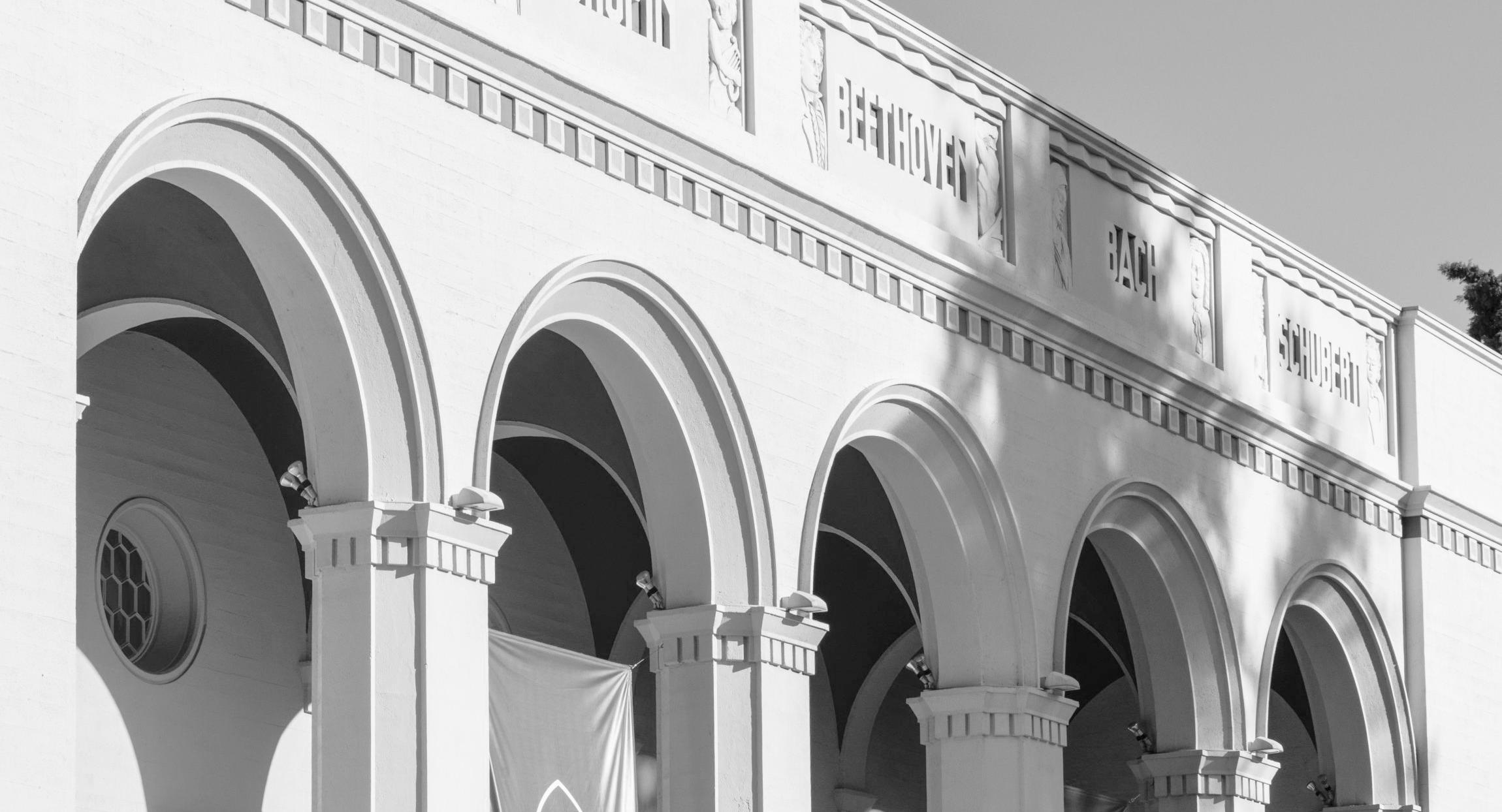
“I really want to be part of work that helps to restore some of the faith in higher education as a public good,” Starr said.
For Pomona, Starr’s goals return to her passion for accessible education. She hopes to ofer the college’s eforts in closing achievement gaps as a model for other higher education institutions. such as the Pomona Academy of Youth Success (PAYS) which ofers mentoring services to underrepresented high schoolers in the Los Angeles metropolitan area.
“I’d like us to be able to replicate some of the work that we’ve done through [PAYS] with community colleges in Southern California and serve as a hub for helping students who have completed two-year degrees to go on to get Bachelor’s degrees in Claremont and around the country,” Starr said.
Corrections
In Issue 2, an article on this year’s student body presidents incorrectly stated that Vera Berger PO ‘23 uses she/her pro nouns. It has been updated to refect that Berger goes by she/ they pronouns.
In Issue 2, TSL incorrectly spelled Kyra Variyava CM ’25 as ‘Varivaya.’
TSL regrets the error.
Harvey mudd’s advancements towards diversity includes its recent signature on the open letter from Code.org.
tALIA beRNSteIN • tHe StUDeNt LIFe
Jboard’s restorative justice training aims to represent its a commitment to fair judicial practices.
SeptembeR 30, 2022 pAGe 3New S
eLLA LeHAVI • tHe StUDeNt LIFe
Let’s get metaphysical with ‘Undone’

A show that makes you laugh and have a small existential cri sis at the same time. Aesthetical ly pleasing rotoscoping. Family drama. This is successful enter tainment and also the premise of “Undone,” an outstandingly exe cuted, animated limited series on Amazon Prime.
Ever since Alma, a 28-yearold woman, almost dies in a car crash, she keeps having weird visions, particularly of her longdead father. Soon, Alma realizes these are not just visions: She can navigate through diferent time lines of reality. But her family thinks she needs help. Season two tracks the exploration of Alma’s genealogical roots in Mexico and Poland, all while underscoring the strength of the familial bond.
The creators of “Undone” han dle the topic of time travel with incredible defness: The meta physical element is given just the right level of exposition, and the show knows how to make fun of itself.
While helpful in short bursts to ease a viewer’s questions, too much explanation strips a sometimes entertaining element of mystery that both allows for loopholes — in case the explana tion doesn’t, in fact, make sense — and allows for the audience to fll in the blanks with their imag inations (much like the “Don’t Show the Monster” rule in horror flms).
Too litle explanation can also prove irritating: see my previ
ous column discussing “Nope,” though I have been approached in dining halls by people (re spectfully) disagreeing with my opinions.
“Undone” falls into the Goldilocks zone of exposition. When I accidentally stumbled across the show via autoplay, I was hooked. As the plot is full of family drama that could stand on its own, the introduc tion of multiversal travel is en tirely unexpected yet somehow so natural.
At the same time, “Undone” doesn’t take itself too seriously. While a serious tone is not nec essarily a bad thing, I appreci ate the addition of another show that is endearing for the sake of its emotional content as well as thought-provoking.
On the broad spectrum of sci ence fction, there are the polar opposites of uptight Sci-Fi and slapstick sci-f. On the spectrum of uptight sci-f (think “Incep tion” and “Star Trek”) to slap stick (“Guardians of the Gal axy” and “Hitchhiker’s Guide to the Galaxy”), “Undone” falls somewhere in the middle.
“Undone” is neither serious nor exaggeratedly comedic; it falls in the middle of the spec trum in a pleasing way. The heavy topics of mental illness, multiple universes, cancer, sui cide, cultural identity and ethi cal research (to name a few) are ofset by the creators’ delightful senses of humor. The protag onist, Alma, is relatable in her bold, blunt sarcasm. She takes
life head-on, whether this comes in the form of bringing her dead father to life in a diferent reali ty or helping her sister navigate marital problems, and all with a biting quip.
Though I more readily asso ciate my favorite kinds of sci-f
The inimitable style of Joan Didion
RYAN LILLESTRAND
My introduction to Joan Didion came early in college, reading her essays in “Slouching Towards Bethlehem” over morning cofee during an ill-fated camping trip on Catalina Island. From that point on I was captivated — or rather, freshly curious.
Didion: the master of the cool and the sharply observed. Her arresting aura is probably best captured in that classic photo of her standing in her living room, one arm resting across her body, the other balancing a cigarete between her fngers. Love her or hate her — and her style is divisive — all journalists writing in today’s world (with “journalists” being a joyfully broad term) are in her debt.
Comparisons are ofen drawn between her and Hemingway, a writer whom she deeply admired and initially sought to emulate, copying down sentences from his books to understand their style and fow. And while her style echoes his straightforward structure and deadpan but perceptive observation, she made it startling, new and chic.
The most recently published book of her essays, “Let Me Tell You What I Mean,” captures just that. The collection, like most, ebbs and fows. It gathers together a collection of pieces from Didion’s decades-long career as a paragon of the “new journalism” style emerging from the 1960s. The book is certainly a hodgepodge: A somewhat melodramatic essay about her rejection from Stanford University stands alongside a piece about Nancy Reagan’s home life. As Nathan Heller writes in The New Yorker, the book “is less a selected essays than a rejected essays, a director’s un-cut of her older work.”
The most recent piece in this “new” book was writen by Didion over twenty years ago. In this way, “Let Me Tell You What I Mean” seemed probably best reserved for the Didion diehards: those already confdent in their love for her particular style. I fgured I would
get around to reading it once I’d worked my way through the rest of her canon.
The book, however, published in January of 2021, was cast in a new light when its author tragically passed away in December of the same year. For me, the book took on a new weight: the fnal period at the end of a sentence, the last writing of Joan Didion — and so I picked it up recently.
Two weeks ago, while I was devouring essay afer essay of “Let Me Tell You What I Mean,” I was also starting a class on literary journalism: A class that is, in many ways, a direct result of Didion’s life work. Before her time, the idea of a creative nonfction writing class would have been scarce indeed.
Siting down to write my frst piece for the class, with my head full of Didion sentence structures and imagery and phrasing, I was frozen. I sullenly avoided the blank document open on my screen for the rest of the day, not sure where to begin. While writer’s block plagues us all, this felt like something of a diferent sort — more a confounding tangle of sentences and phrasing than an uncertainty of what to say.
It’s an of-dispensed kernel of writing wisdom: the inevitable process of emulating the styles of dozens of writers, picking up sentence structures and pacing and litle turns of phrase until some fragments stick to the ceiling and become some discernible style you can begin to cultivate and call your own. It’s an encouraging thought — unfortunately completely unconfrmable until one has ostensibly reached your intended destination — but nonetheless, I have clung to it.
Joan Didion’s writing, though I do love it, has periodically confounded me, however. Her style is perhaps the frst writer’s style that I have ever loved but never aspired to emulate. I have begun to consider it sacred — not in the sense that it is holy or above critique, but rather that it exists in
a world of its own, untouchable and not meant to be meddled with.
As many writers have pointed out over the years, when you try to emulate Didion, it becomes obvious — her style is that distinctive. It can be wandering and recursive, flling sentences with musings bordered by a staccato of commas, but then it can snap into startling clarity, suddenly biting and clear-eyed and shocking.

In the weeks since fnishing the book, I still feel as if my thoughts have not yet fully setled. As the book sits fnished on my shelf, her particular way with words has begun to fade, but the question of her style and what to do with it is still poking around in the corners of my mind.
This is what I can say.
“Let Me Tell You What I Mean,” despite being a miscellany of lesser-known works, is still trademark Didion, bursting with her classically cool style — mater-of-fact, wryly funny and always devastatingly observative.
Didion herself is without a doubt one the most infuential, culture-shaping writers of our time. From sheer will and practice, she wrought a singular style that will stand apart for decades to come. Aspiring writers of today would do best to emulate her by following her footsteps, not her sentence structures — blazing a new trail, pushing the boundaries of the essay and what it can do, and how it can be crafed.
With her death, we have lost one of the great, inimitable voices of American leters. But through her legacy, we see the path by which true literary innovation can be crafed.
Ryan Lillestrand PZ ’23 is a book columnist for TSL. He is currently contemplating spending too much on a 1971 hardcover edition of Frank O’Hara’s “Collected Poems.”
with a dramatic tone, “Undone” provides an excellent example of balancing the playful with the pensive.
Rorye Jones PO ’22 gaslit herself into thinking she was part of the Roy family afer she was spiritu
ally wrecked from watching “Suc cession” in two weeks while in New York, and spent the rest of her time there aggressively staring down ev ery suited pedestrian (there were a lot) in search of Mathew Mac fadyen. She writes for TSL’s TV and flm columns.
5C students attend red carpet premiere of ‘The Race Epidemic’
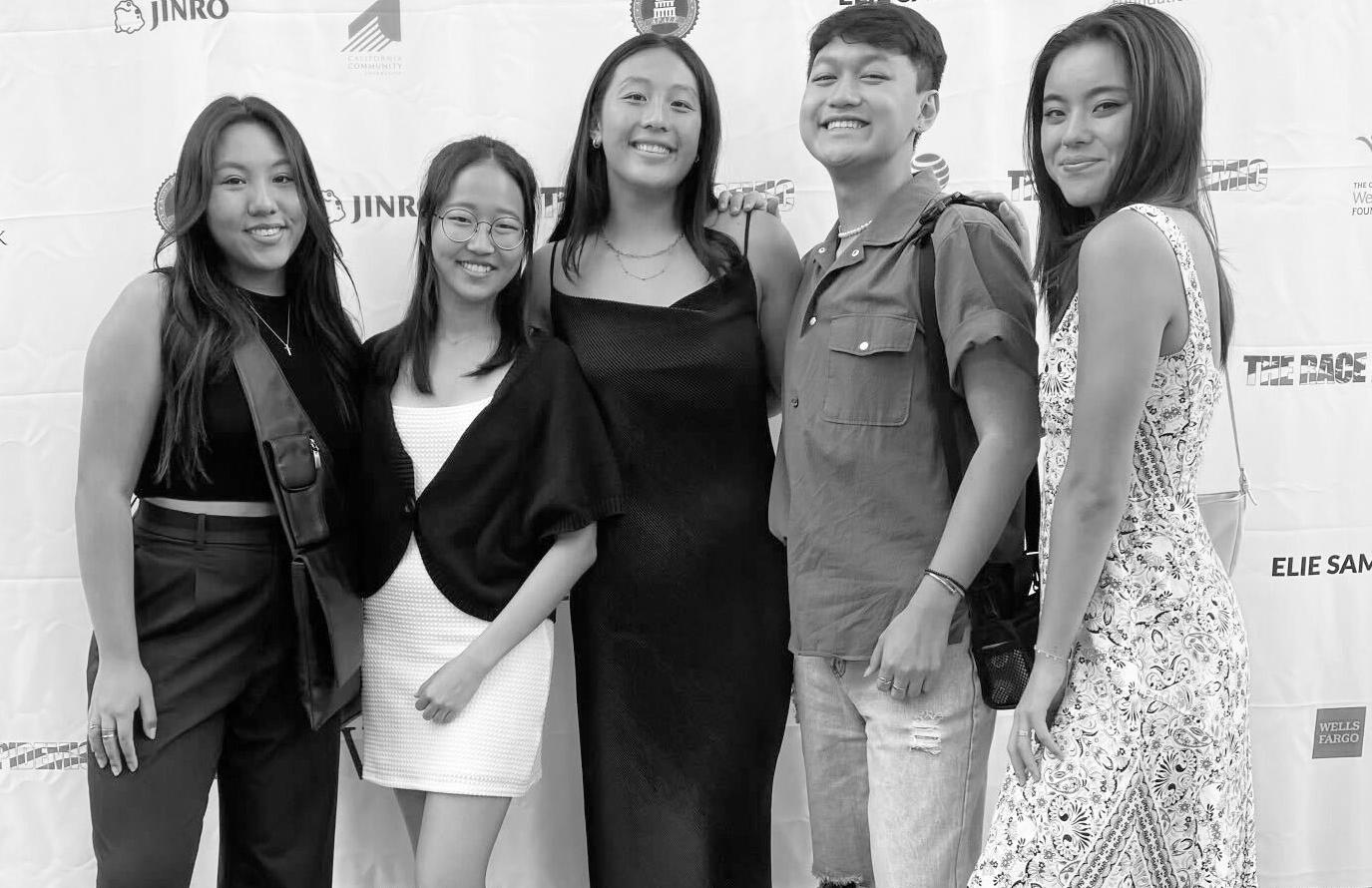
Red carpet premieres are a highlight of Los Angeles life, as famous celebrities show of their glamorous outfts. On the carpet this week, students from the Claremont Colleges got the chance to see what the buzz was all about — this time at the TCL Chinese Theater.
At an exclusive screening on Sept. 26, fve 5C students had the opportunity to leave campus for the premiere of a new doc umentary: “The Race Epidem ic.” Although the trip was not a 5C-sponsored event, students in Pitzer College’s Social Docu mentations class had the oppor tunity to walk the red carpet at the Los Angeles theater.
Hyejin Yun PZ ’26 helped make the experience possible through an opportunity with the K.W. Lee Center for Leader ship, where she worked in the past. Afer realizing that the flm connected to the course material in her Asian American Studies class, Yun ofered a few spots to her classmates hoping to share the unique opportunity to see the flm premiere.
Afer a long drive to Los An geles, the initial impression of the TCL Chinese Theater was a bit jarring to some.
“All night, I was trying to fg ure out if it was racist or cool,”
Rachel Ma PO ’26 said. “Is this appropriation or appreciation?”
These lines can ofen become blurred. Asian American his tory is embedded in the build ing — stone, temple bells and Heaven Dogs in the building were imported from China and many interior decorations were hand-created by Chinese arti sans — but some students felt like the theater’s status as the world’s largest IMAX auditori um distracted from this mean ing.
The flm focused on expos ing the hatred that erupted to wards Asian Americans and Pacifc Islanders during the COVID-19 pandemic. Through interviews with Asian Ameri can politicians, “The Race Epi demic” presents the hate crimes that swept through the country during the pandemic and which still persist today.
“It was very empowering in a tragic way,” Ma said. “Everyone had gone through the experienc es of the people in the movie, so [there was a] strong sense of solidarity with everyone in the theater.”
The students got to take an even deeper look into the flm through a Q&A session with the flm’s direc tor, Tony Shyu.
“It was hard for the director be cause [he] made it before COVID started, and then he basically made a diferent version during COVID,” Rebecca Yao SC ’26 said. “There were a lot of processes to it.”
Although changing the direc tion of the flm to respond to the pandemic was difcult for Shyu, it added a new purpose to the flm’s message.
“It inspired me to do even more for my community,” Yun said. “It was an emotional response.”
As students in a course about documentation, they understood the impact flms can have. Yao described how flms make infor mation more accessible. By using visual and auditory aspects, more people are able to take in the nar rative.
“[Film] is an uninterrupted way for communities to speak up about their experiences,” Yun said.
Ma shared something their pro fessor, Johnson Chang, had said about how the specifcity of a flm impacts its audience: the more spe cifc, the more relatable. And “The Race Epidemic” accomplished ex actly that for Ma.
“The experiences of an Asian politician are very similar to the experiences of an Asian college stu dent,” Ma said.
Films such as “The Race Epi demic” can also function as a foun dation for people to come together.
“It was really cool to hang out with people and talk about that stuf,” Ma said. “It was really fun just us being able to experience that together.”
Not only were the students able to watch this flm together, but they were able to walk the red carpet — or at least a portion of it.
All the students found some hu mor in their experience.
When asked about their exciting experience on the red carpet, each response began with a light laugh. Yao explained that the glorious carpet “was like three feet,” with Ma adding, “it was more like a red shower mat.”
Although it was a short-lived walk, they were able to fully ex perience the TCL Chinese Theater. The flm allowed them to learn about the experiences of politicians during the pandemic while feeling connected to a broader community.
Yun said, “[flm] is the best way for other communities other than AAPI to empathize with the com munity they are listening to and seeing.”
JADA SHAVERS
COUrtESY: rEbECCA YAO
LItErArY WANDErINGS
Five 5C students had the opportunity to leave campus for the premiere of a new documentary, “the race Epidemic,” at LA’s tCL Chinese theater.
PAGE 4 SEPtEmbEr 30, 2022Arts & Culture
RORYE JONES DrEA ALONZO • tHE StUDENt LIFE
SASHA mAttHEWS • tHE StUDENt LIFE
SCENE It
Alison Bjorkedal: A story of harp, Hollywood and the heart
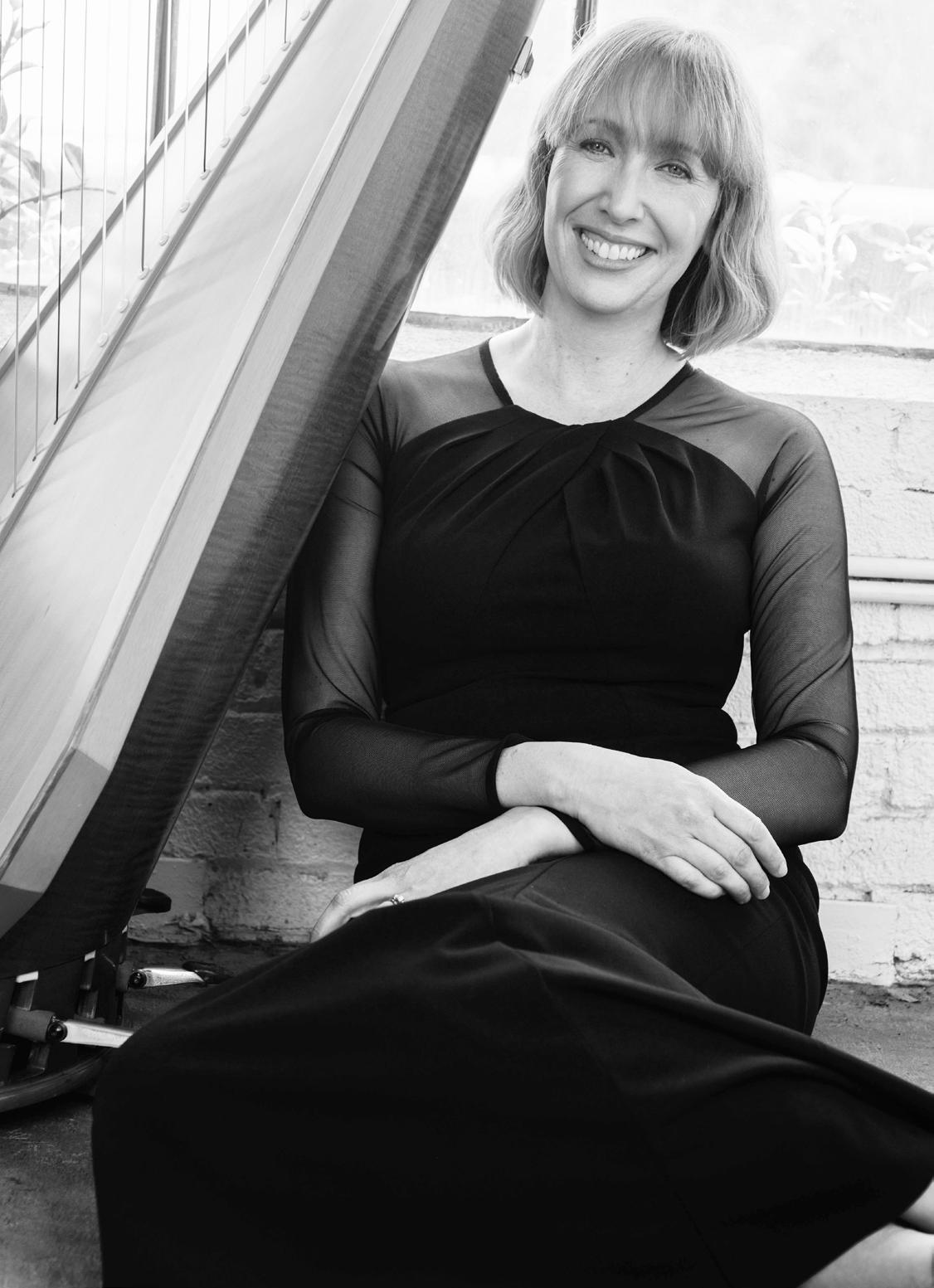
Pomona College music lec turer Alison Bjorkedal fell in love with the harp as a fresh man in high school, although she couldn’t even dream then that she could make a life out of it. Decades later, though, Bjorkedal has won a Grammy, worked with major recording artists like Ma donna, Sia and Kid Cudi and re corded for Hollywood blockbust ers, something that her childhood self didn’t think was possible.
Called a “force feld unto her own, yet joined by something big ger” in a Los Angeles Times arti cle, Bjorkedal is now an accom plished harpist and musician, a passion that takes up half of her career. The other half is focused on her second love: teaching.
Bjorkedal frst decided to pur sue the harp seriously when her brother guided her through the college admissions process.
“As I was applying to colleges, my brother, who’s older and had just been to college, sat me down and said, ‘What can’t you imag ine being absent from your life?’ and I was like, ‘Well, it’s easy: it’s music,’” Bjorkedal said. “He was like, ‘Well, maybe you should consider being a musician,’ and I was like, ‘I don’t think you can do that.’ He, kind of gently, was like, ‘You’re at a time in your life where you should try,’ so I decid ed to study music.”
Afer that, Bjorkedal relied on the connections she made with other harpists as an undergrad uate student at the University of Oregon and later during gradu ate school at the USC Thornton School of Music, which provided her with the opportunity to play the harp on several recordings.
As a result of her performance in these jobs, she said news of her work would travel by word of mouth and she would get ofers for more recording opportunities.
Eventually, Bjorkedal’s success led her to play on tracks for ma jor recording artists and for vari ous television shows and movies.
Bjorkedal is “honored” to have been able to play on these tracks because of her passion for movies and listening to records.
She particularly loved geting to work with recording artist Sia, whose album “This is Acting,” came out a few years prior to Sia’s mainstream success in the United States.
“I remember siting down recording solo harp for this al bum, and hearing this voice in my headset and being like, ‘Who is this person?’ and they’re like, ‘Her name’s Sia. She’s kind of new to the States,’ and I was like, ‘Oh my gosh. She’s amazing,’” Bjorkedal said. “And then, four or fve years later, she was all over the radio and I was like, ‘I can’t believe she made it! It’s amazing.’ I just think she has one of the best voices.”
Bjorkedal’s other favorite ex perience recording for a pop album was when she had the opportunity to record for Madon na’s record “Rebel Heart” and see Madonna in person.
“I was like, ‘Wow! That’s a bucket list thing,’ and she was super gracious and really cool,”
Bjorkedal said.
For movies and TV shows, Bjorkedal especially enjoyed recording in the horror genre because of how it difers from what is normally expected of harp players.
“Although I don’t like to watch horror flms –– I’m a lit tle bit of a wimp –– the music is really fun to play because you can imagine everybody be ing scared and you’re playing these ominous things and the harp, as a general reputation, isn’t thought of as scary, so it’s really fun to get to inhabit that emotion for the scary movies,” Bjorkedal said.
Bjorkedal’s experience as a musician isn’t just confned to mainstream music, though. Her work also extends to contempo rary classical music for which she has received a Grammy.
She won her 2014 Grammy for Best Classical Compendi um for her song “Plectra and Percussion Dances,” which she recorded with the musical ensemble Partch, a contem porary music group in which she is a member. According to Bjorkedal, Partch plays “niche music” composed by Harry Partch.
The group members did not expect to receive a Grammy de spite their nomination, so they were caught of-guard when their win was announced.
“They called our name, and none of our group got up be cause we were just stunned, and then it was just pure surprise and joy to work really hard on something and feel like people responded to it in a nice way,” Bjorkedal said.
Outside of recording,
Bjorkedal currently teaches at the college level as faculty at Pomona, Occidental Col lege, Pasadena City College and California Institute of the Arts. Geting to teach provides Bjorkedal with “a lot of joy.”
“I just fnd it a fascinating process to get to know each person, help them highlight their strengths, take the things that are more challenging for them and fnd a way to access them and get them beter,” Bjorkedal said.
As a faculty member at Pomona, Bjorkedal has found that teaching has changed her “as a person” and has made her “strive to be a beter mu sician.” While part of this growth has been facilitated by her relationships with faculty members, she also cites her re lationships with her students as contributing to her growth, as their work ethic and aca demic ambition continue to stun her.
“[My students] were into so many diferent interesting things and then beyond that, they brought this curiosity to the harp that is just so refresh ing,” Bjorkedal said. “I was blown away. When you’ve been playing an instrument for 25 years, you can start to feel like maybe you’ve done every thing but then, all the students here brought interesting ques tions and then were practic ing so hard on their own. The fact that [I get] to teach [at] an amazing set of institutions [is] defnitely a pinch-me type of situation.”
And that’s coming from someone who has won a Grammy.
Beyond just cofee: The Motley celebrates student artists
Etsy, she prefers selling at the Mot ley because it eliminates shipping costs and other fees.
Tucked inside Seal Court lies a hub of student cafeination and community: the Motley Cofee house. Known for its MatchaCha-Chas and calming commu nal atmosphere, the Motley is a center for student camaraderie at Scripps College.
The Sept. 15 Motley opening was a way for student artisans to be placed front and center in this space. This is the frst time the Motley will be open for the entire academic year since the outbreak of COVID-19 in early 2020. The aptly titled “Mot Gala” celebration featured a live band playing outside while the stage inside was flled with items for sale. Students focked toward the opportunity to purchase hand made jewelry, crochet items, mugs, sweatshirts and more.
The night was wildly suc cessful for many, especially the artists. Ceramicist Kasey Bumgardner SC ’23 said she sold nearly half of her pieces during the opening alone.
The Motley acts as a gallery space for various artists of dif ferent media. Playing into the theme of being a student-run business, the Motley allows stu dent artists to use the space as a pedestal for selling and showcas ing. Without charging commis sion, it encourages small student businesses while also contribut ing to the warm atmosphere.
Not all of the art in the Mot ley is for sale, however. Artists have the option to either sell their work or simply display it. Whether for sale or not, art flling the tables and walls contributes to a sense of communal identity.
“I like that The Motley is not just like a cofee place or a café,” Bumgardner said. “It’s a space to meet with friends and look at and appreciate student artwork.”
As a crochet artist, Sylvie Kro mer SC ’25 also appreciates the Motley’s unique setup.
“It seems like a cool way to have students experience each other’s art,” she said.
When Bumgardner decided to sell her work at the Motley, she was pleased not to lose any money on commission fees like she did from third party web sites. Previously having sold on
“Now that this is how I sell my art, all the profts go towards No body Fails at Scripps and the Cla remont Student Worker Alliance,” Bumgardner said.
There was a push at the opening of the Motley last semester to in clude more student art, according to the Facilities Manager Liz Messing er SC ’23.
“It’s a great way to support our peers,” Messinger said. “I also think that since more people picked up crafing skills over COVID, there was a new wave of artists.”
Her favorite thing about the Mot ley is the air of collaboration that has echoed throughout the space since she’s been a student. It has always been a central meeting place where open mic nights would happen.
“I’ve always been a friend of the Motley, even though I only started working here this year,” she said.
Kromer also atested to the sim plicity of selling at the Motley. Want ing to make some extra money while in college, she found the process of selling at the Motley to be very easy.
“I just brought all my products on opening day,” Kromer said. “They even had litle cards with my Venmo and Instagram handles on them too.”
This accessibility is a testament to the overall culture of the Motley Cofeehouse. Its staf are all dedi cated to fostering a sense of com munity within the Scripps campus, including how they involve student artists.
Messinger spoke to her time working at the Motley as a deeply rewarding experience.
“I love my co-workers, but my favorite part about working here is being able to lay out tangible work and then see it happen,” she said. “It’s so satisfying to see the Motley go from the state it was in before we opened everything up to being flled with people.”
For Messinger, the Motley is a space that atests to how much ev eryone in the Scripps community cares about each other. From the litle doodles on to-go cups to the handwriten whiteboard displays, it feels like a place where everything is a labor of love.
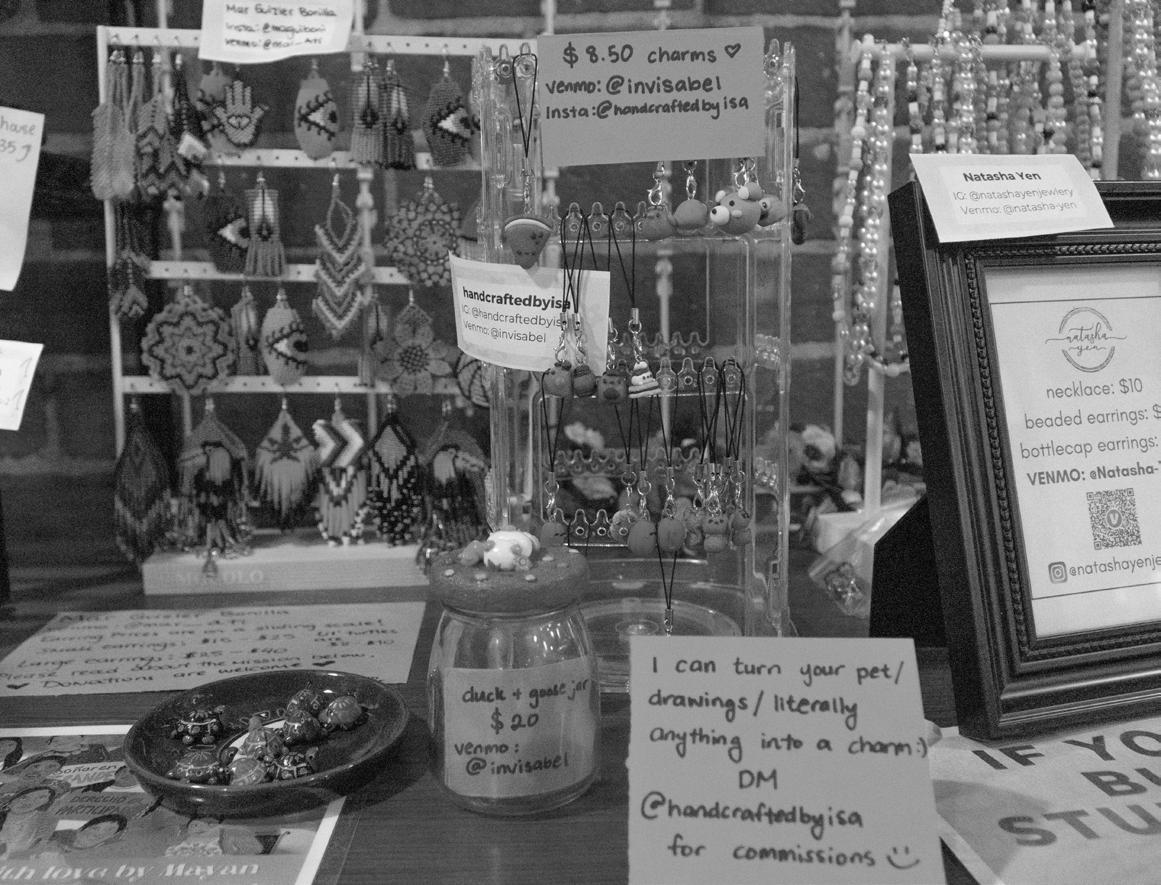
For more information about selling or displaying art at the Motley, check out their Instagram @motleycofee.
This column contains minor spoilers for season three of “High School Musi cal: The Musical: The Series.”

In the general cultural con sciousness, Disney+’s “High School Musical: The Musical: The Series” likely brings to mind one of two things. Either its absurdly long title or the role it played to skyrocket Ol ivia Rodrigo’s career. Its three-sea son run has had quite a moment in cultural signifcance, but the most recent season proves that it’s worth more than just its behind-the-scenes drama — even if that’s what initial ly drew an audience.
“HSMTMTS,” created by Tim Federle, premiered in 2019 during the early days of Disney+. It follows the drama students of Salt Lake High School East — or “East High” as it is colloquially known — which fans may recognize as the school where the original “High School Musical” franchise was flmed. The frst season revolves around the students puting on the frst pro duction of “High School Musical” ever to be done at the school, hence the meta-nature of the show’s ti tle. The frst season’s plot revolved around the production of “High School Musical” and the love trian gle between Nini, played by Olivia Rodrigo; Ricky, played by Joshua Basset; and EJ, played by Mat Cor net.
In January 2021, “HSMTMTS” gained a whole new role in the cul tural zeitgeist beyond just being a wholesome show about theater kids. Olivia Rodrigo’s breakout
frst single “driver’s license” was released, and with its instant popularity came an outpouring of rumors about the song. There was great speculation that Rodri go wrote it about her relationship with co-star Joshua Basset. Based on the lyrics of the song, it also was rumored that it was about the end of their relationship and the start of Basset’s alleged relation ship with actress Sabrina Carpen ter.
For months afer the song came out, it dominated the cultural con versation. Basset and Carpenter were subject to seemingly endless online harassment, even receiving death threats. Its impact is still felt even today, with album releases from Carpenter and new music from Basset that continually lead to even more speculation — and it can all be traced all the way back to a show about a group of theater kids who go to the Salt Lake High School East.
The behind-the-scenes dra ma and conversation around the song led into the premiere of the second season in early summer 2021, afer the release of Rodri go’s incredible, instant-favorite debut album “Sour” — a season I ultimately found didn’t live up to the genre perfection of the frst season.
However, the third season, which premiered on July 27 and just ended on Sept. 14, is far and away my favorite season of the show so far, and it defnitely re stored the magic that was cap tured in the frst season.
The East High students head
to Camp Shallow Lake, a sleep away summer camp in Califor nia that has promised a celebrity guest. The guest turns out to be Corbin Bleu, the original Chad Danforth from “High School Mu sical.” The kids learn that they are going to be the frst group outside of Broadway to perform the musi cal version of “Frozen.” On top of that, they will be flming the en tire production for a documenta ry to be released on Disney+. This continuation of the meta aspect of the show never felt heavy-hand ed, and its integration into the plot as the main source of confict was well done.
I was excited to tune in each week to “HSMTMTS,” I have be come very atached to the central
group of teenagers, and I am not too big to admit that their unwav ering support and empathy for one another has made me tear up more than a few times. As I wrote the frst time I wrote about the show in 2019, the scripting of the show seems to take great care to portray the teenage characters and their problems in a way that never feels patronizing toward them.
“HSMTMS” also shines in its characterization of all of the stu dents. I hesitate to call anyone a side character, as they are all giv en their own storylines and aten tion in the plot.
Ashlyn, played by Julia Lester, had a particular ly heartwarming and emotional plot line this season, coming to terms with her sexuality while at
camp. Additionally, Kourtney, via Dara Reneé, struggled with anxiety while playing Elsa in “Frozen” and was buoyed by the support of her fellow East High students, as well as some new characters.
In the history of Hollywood, behind-the-scenes drama is a tale as old as time. So long as there are people involved in the creation of a piece of art, there will inevitably be interpersonal conficts. We can see it in one of the greatest albums of all time, Fleetwood Mac’s “Ru mors,” and even as recently as last weekend with the release of “Don’t Worry Darling,” which has been a source of endless conversation over the past few weeks due to alleged confict between actors.
The third season of “High School Musical the Musical: The Series” is one of my favorite sea sons of TV ever. Everything came together to create a wholesome group of characters and a compel ling plot line with great chemistry. Although “HSMTMTS” might be on your radar because of things that happened behind the scenes, it’s worth a watch for the greatness of the show alone. Plus, catching up now will ensure your ability to watch the meta-reunion madness of season four.
Claire DuMont SC ’23 is one of TSL’s TV columnists. She is currently re watching “Derry Girls” ahead of sea son three being added to Netfix soon, and is loving the new episodes of “Ab bot Elementary.” One of her favorite memories from childhood is going to see “High School Musical 3” in theaters with her mom.
COUrtESY: AArON JAY YOUNG StUDIOS
CLAIRE DUMONT
ANNA CHOI • tHE StUDENt LIFE
the motley allows student artists to use the space as a pedestal for selling and showcasing.
Grammy award-winning harpist Alison Bjorkedal frst decided to pursue music seriously when she was an undergraduate at the University of Ore gon.
SEPtEmbEr 30, 2022 PAGE 5Arts & Culture
EMMA NEWMAN
LILA GAMBLE & FIONA LARSEN-TESKEY ASYA LYUbAVINA • tHE StUDENt LIFE
rEGULArLY SCHEDULED PrOGrAmmING
‘High School Musical: The Musical: The Series’ fnds its stride in third season
t he quest for the best taco at the Claremont Colleges
ISAAC WARSHAW
Taco night at the Claremont Col leges is a night of long lines, hun ger and even longer lines. I’ve had incredibly delicious meals — and some not-so-memorable ones. Some of those less memorable experienc es made me want to give up on 5C tacos altogether, but then I decided that I couldn’t give up on the meal that my friends and I wanted most. And so, I tried the tacos at all fve Claremont Colleges to review and beter advise you all so that you don’t have to feel disappointed. For the sake of this article, the ratings out of fve will be relative to other tacos on campus, and not all of the tacos in the world.
Pomona College — Frank and Frary Dining Halls
In my experience, the tacos at both of Pomona’s dining halls, Frank and Frary, are basically the same; for convenience, I will give these dining halls one rating. Even though the lines for tacos can be intimidating ly long, they move prety quickly. I think this is due to the fact that the lines are self-serve, which is a big plus as I can put the amount of meat and salsa that I want on my tacos. The salsas are not very spicy, but Frank sometimes has a spicier salsa available by request. Another oddity is that instead of limes they usually have lemons, which my friend from Mexico fnds very unusual. They usually have barbacoa and chicken for meat options, and I think that the chicken is probably the best-sea soned chicken taco meat on campus.
Overall, I give Pomona’s tacos three-and-a-half out of fve stars (four out of fve stars when they have the special salsa).
Scripps College — Malot Dining Commons Moving up to Scripps, Malot, was the frst non-Pomona dining hall where I tried tacos. Almost ev ery time I have gone, the line has been ridiculously long. I will say that the staf at the dining hall at Scripps are very nice when they are serving the tacos and take great care to give out well-portioned tacos. I especially like the carne asada and carnitas tacos at Malot. The cilantro and onion that they have is consis tently very fresh and well chopped.
Overall, I give Malot’s tacos four-and-a-half out of fve stars. They are consistently tasty, even if they require a long wait in line.
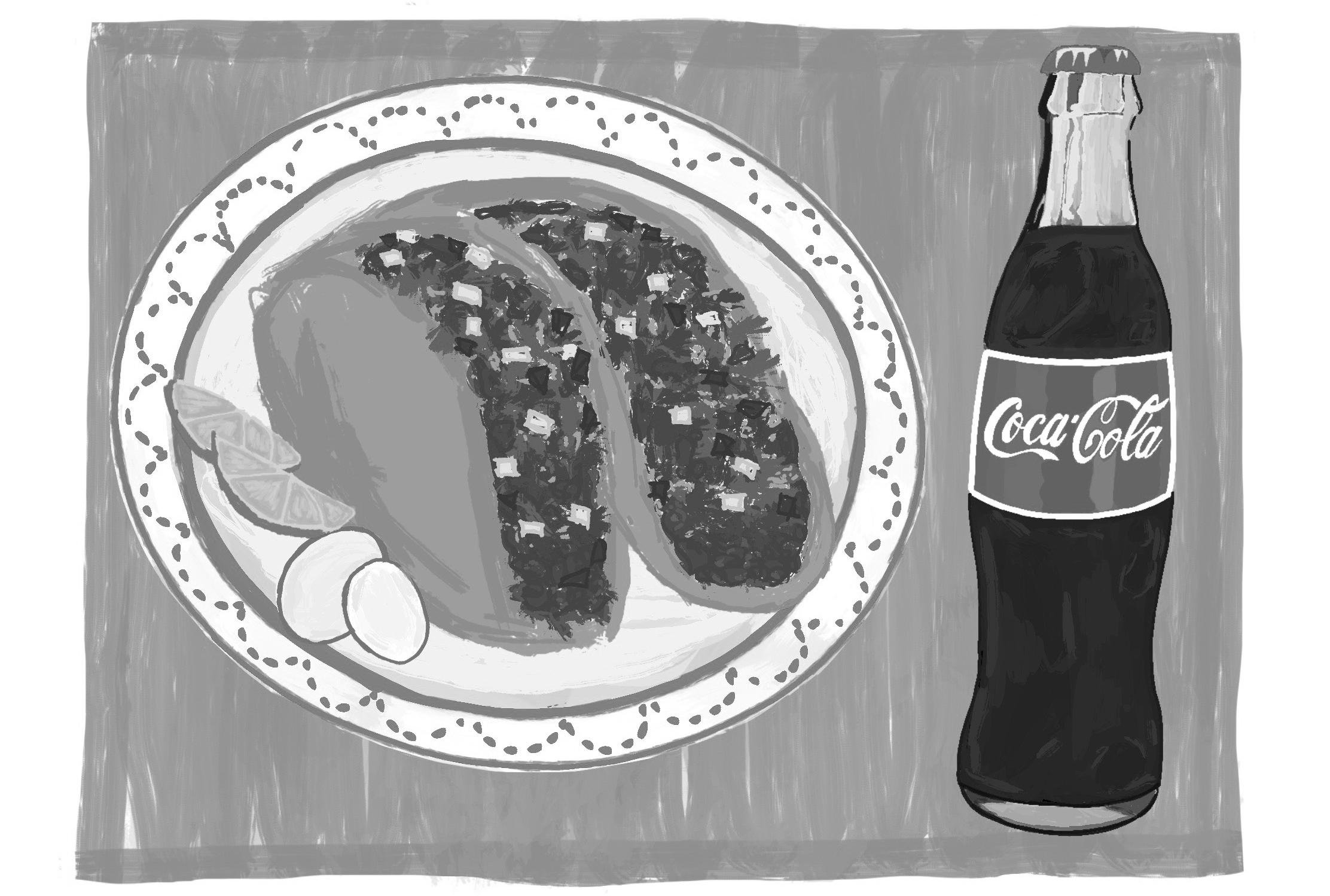
Piter College — McConnell Dining Hall
The frst taco I tried at Pitzer’s McConnell Dining Hall was the Korean taco. I had heard many positive reviews, so even though the line was extremely long and slow-moving, I decided to wait it out. I have not returned for the Korean taco since, though, as I thought that it lacked seasoning and that the meat was dry. In fact, I did not return to Pitzer for a long time until I decided to try their Mexican tacos. The line for those was much shorter than that of the Korean tacos, and it moved much faster. I will say that I really liked
the carnitas and thought that al though they were not spicy, the salsas were more favorful than those at other dining halls. I also liked the tortillas.
Overall, I give the tacos at Mc Connell four out of fve stars.
Harvey Mudd College — Hoch-Shanahan Dining Com mons
Even though The Hoch at Har vey Mudd is one of the dining halls that I frequent the least — none of my friends want to walk there — is one of my favorites. The taco line was surprisingly short compared to other lines I’ve experienced there. I tried the car nitas and chicken tacos. I thought that the quality of the meat was good. My favorite part of the tacos at the Hoch is the spice bar: a table
Let’s BeReal: How 5C students are capturing campuses this year
JADA SHAVERS
Once a day, every day, like clockwork, phones across the 5C campuses buzz to the same two-minute notifcation: “Time to BeReal.”
Released in 2020, BeReal, a so cial media platform gaining pop ularity this year, has given social media connections a new mean ing. Advertised as a new and unique way to use social media, the app claims to be a real insight into the daily lives of BeReal us ers. The app operates by prompt ing users to take a quick snapshot within the app, sending out the prompt to all users at the same time once every day. Within a time limit of two minutes, the app takes a photo of both the user and their surroundings. If someone posts late, it notifes their friends of the late post as an incentive to post on time.
The app has become a new phenomenon, not just as a con cept, but also as a mode of taking and sharing photos.
“Its double camera feature al lows me to have fun with the pic tures and get artistic,” Giacomo Marazza PO ’25 said. As a way to see both the photographer and photo, it has allowed for a difer ent perspective in photography: including the photographer in the frame.
This two-frame photo concept is not the only reason for the app’s popularity, however. Many view BeReal as a great way of keeping up with the daily lives of their friends in diferent places.
“It’s interesting to see what people are doing in real time,” Euan Kang PO ’26 said.

As a form of communication, the app has constant, daily con tact built into it –– something that other platforms are missing.
“It shows me what [my friends] are up to, and it feels good to have that kind of connec tion with others,” Mathew Par sons PO ’26 said.
For others, social media plat forms like BeReal can cause pres sure when posting.
“The impact of seeing cool [posts] is amplifed, which creates a social pressure,” Sid Rastogi HM ’23 said. “I don’t think BeRe al addresses the underlying issue with social media, which is that people feel a societally-induced pressure to constantly share their
own lives, as well as keep up with all of their friends.”
This pressure translates to BeReal as users selectively show their daily lives so that it in cludes the moments that appear more interesting than they are “real.”
“I feel like it takes you away from the actual moment you are in, to make it seem just as cool, or maybe even more cool, for those who will see your BeRe al,” Jessica Sloan-Cooper CM ’26 said.
The concept has raised ques tions from some users about the genuineness of the captured moment, and whether one can truly be present in an online environment. Reid Cohen PZ ’24 explained that some of his friends choose not to post on time.

This delay is common for many users; people either avoid the notifcation to stay in the moment or wait for a beter one to come along.
Allowing people to wait can prevent the user from showing what is happening at the exact moment of notifcation, creating a delay between diferent users’ post of the day.



“People have taken advan tage of this feature by delaying the BeReal until they are do
LUCIA mArQUEZ-UPPmAN • tHE StUDENt LIFE
ing something interesting or worth capturing,” Erin Rodri guez PO ’26 said. “This almost completely defeats BeReal’s purpose of the app name, to be real. To be in the moment. To capture people at their raw and authentic instances.”

BeReal is meant to capture small, random, unedited mo ments. Users are divided as to how well it accomplishes this goal.
“It depends on how you use it,” Frances Walton SC ’26 said.

These difering usages mean that users take the stat ed aim of the app with varying degrees of seriousness.
“Some people will actually be real where others wait until they’re doing something ‘cool’ to post,” Lauren Eckstein PO ’26 said.
This question of authentic ity is certainly put to the test when looking at BeReal’s use on the 5C campuses this year. BeReal highlights the average life. Bringing something new to social media platforms is a massive task, but BeReal is tak ing it day by day.
“It’s spontaneous and ran domized,” Rodriguez said, “for the purpose of captur ing people just going through their normal lives.”
with an overwhelming number of spices to choose from.
Overall, I give the Hoch four out of fve stars as I can use the spice bar to make my tacos just how I want them.
Claremont McKenna College — Collins Dining Hall
Onto Collins, Claremont McK enna’s dining hall. Last week my friend reached out to me and said that she wanted to have Collins’ tacos. I was surprised because I had never heard anyone talk about the tacos at Collins, let alone rave about them. Upon entering, I was shocked at how short the line was. I only had to wait for a couple of minutes. At Collins they had limes and guacamole which was a nice touch. Also, if you ask,
they have a special salsa that they warn you about. While it was tasty, it was not as dangerously spicy as they had claimed. I was impressed by the quality of the carnitas, and the chicken had more seasoning than the other 5C dining halls. The taco that I tried there was the bir ria taco, and even though it had a slightly longer line, it was worth the wait.
Due to the quality of the tacos, the sides and the lack of line, I must give Collins fve out of fve stars — making them the winner.
Isaac Warshaw PO ’25 is a student with a passion for favor and a hunger to satisfy. He writes about food and cooking in Claremont to help fellow students make more informed culinary decisions so that they can improve their dining experience in college.
GrAPHIC bY DrEA ALONZO | StArS bY ELLA LEHAVI • tHE StUDENt LIFE
PAGE 6 SEPtEmbEr 30, 2022Arts & Culture
CLArEmONt CrAVINGS
Stop the ‘diversity paparazzi’ in college recruitment
Sometimes, it can feel as though the most diverse place on campus lies within the stacks of brochures and fyers that sit in admissions buildings, ready to convince prospective stu dents and parents of impressive academic diversity. And while it’s certainly great to see that students of color in academia are being recognized and rep resented rather than treated as though invisible, it’s easy to feel conficted about the representa tion.
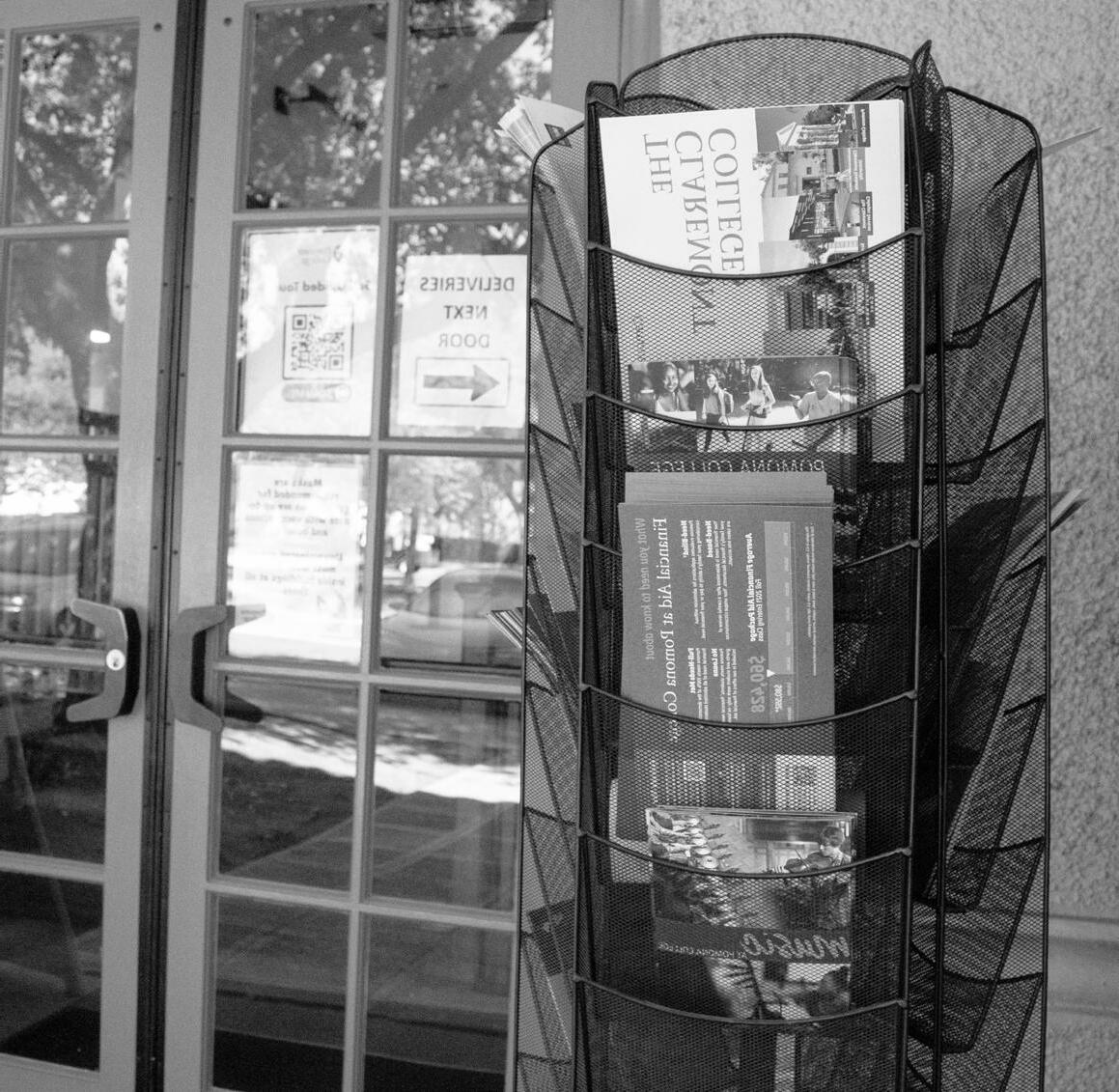
In 2020, the Claremont Col leges commited to various ini tiatives for fostering inclusivity amidst national outrage afer the tragic murder of George Floyd. Still, there remains work to be done when it comes to actually creating an inclusive environ ment on campus. Seeing your face plastered on marketing materials for an institution you might not necessarily feel sup ported by can be psychological ly damaging to students and un dermines the inclusivity the 5Cs strive for. To ensure that minori ty students feel the efects of the Claremont Colleges’ initiatives to increase inclusivity, the col leges must address and remedy the current trend of intentional ly seeking out students of color or “diverse” groups of students for school photographs.
Minority students have been vocal about this uneven repre sentation – ofen more so than their white peers. A related study found that minority group members tended to be signif cantly less favorable toward overrepresentation compared to other types of representation. Meanwhile, the negative efect of minority overrepresentation was not detected among major ity group members, suggesting that while exaggerated minori ty representation may comfort white audiences, they tend to have the opposite efect on the minority students whom diver sity eforts should be serving.
The negative impact of this overrepresentation is not limit ed to students already on cam pus but also extends to pro spective students viewing the brochures. For many minority students, diversity is a major cri teria in deciding their future col lege. A higher education report found that the diversity of a col lege campus and its atitude to ward inclusivity directly impact minority student retention rates.
In other words, when a pro spective minority student is misled about the on-campus en vironment for students of color, they are efectively endangering their likelihood of graduating from said college. If the Clare mont Colleges wish to create an environment where students of all backgrounds can be success ful, they must ensure that the air of inclusion on campus matches the image of diversity on the pamphlet.
Increasing courses, grants and research regarding racial justice were all incredible ini tiatives undertaken by the 5Cs in 2020 to foster inclusivity at the institutional level; however, cultural and racial inclusivity is more difcult to foster at the so cial level, and the 5Cs still have a long way to go on that front.
That photographers seem to have to explicitly seek out stu dents of color at school functions reveals that while the campus may be diverse, campus events are ofen not. Culture-fests and afnity group-hosted dances are nice, but there needs to be a more conscious efort to make every party and event inclusive, not just those allocated specif cally for POC. Minority students on campus deserve to feel safe at any and all on-campus events.
A solution with long-term impacts that the Claremont Colleges can undertake to im pact inclusivity would be to in crease accurate representation at the admissions level. Under standing what’s at stake when colleges mislead prospective students, the 5Cs should ensure that all admissions and market ing teams are stafed with at least one Diversity, Equity and Inclusion (DEI) professional.
Having a DEI ofcer be a part of projects such as brochure graph ics can ensure that not only the result, but also the process of making the brochure, is inclu sive and respectful of students of color.
The answer to the call by stu dents of color for beter repre sentation isn’t building a reputa tion of diversity – it’s building a deliberate culture of inclusivity. And until minority students can confdently say that they feel their campus home is inclusive, then the “diversity paparazzi” need to wait their turn.
Ashley Park CM ‘25 is from Clare mont, CA. She loves the outdoors, watching “Community” and fnd ing the perfect late-night snack.
Education shouldn’t be hindered by menstruation
I dragged my body to the restroom, eyes still glued shut. I got on the toilet, did my thing and — oh — there it is. I’m on my period.
It feels like a milestone: my frst time menstruating in col lege. It’s only memorable be cause I thought I had bought everything of my freshman college packing list — turns out it was everything but men strual products. I searched through the restroom for a heavy-fow pad, but I only found panty liners and tam pons — two products I don’t use. I sighed, frustrated at my self for not anticipating this. Instead, I asked my roommate for a pad.
When I asked my friends about where to fnd menstrual products at Pomona College, they told me the Sustainabil ity Ofce ofers free ones. The Coop Store and Huntley Bookstore sell them too, I also learned. While I appreciated the idea of free products, I absolutely had no idea where they were — nobody point ed me in the right direction. I searched through the col lege’s website for any signs as to where exactly I could fnd them and didn’t fnd in formation. Was I supposed to play scavenger hunt to get a pad while I bled vicariously through Marston Quad?
My search isn’t an isolat ed experience. Why are con doms, dental dams and lube advertised freely in the halls without also adding pointers or directions to where men strual products are? Don’t get me wrong, I wholehearted ly support the promotion of safe sex and sex positivity on campus; yet, the invisibility of normalizing menstruation irks me. In society, periods are seen as disgusting, shameful and embarrassing. There’s so much

misinformation about an indi vidual menstruating — ranging from invalidating feelings to only periods defning woman hood.
Menstruating in college shouldn’t be this hard, period.
So, let’s talk about period poverty and accessibility — not just at the Claremont Colleges. Period poverty is the inability to aford or access period products. This heavily afects low-income individuals who menstruate in the United States. Choosing be tween buying tampons or food is an issue many face. Accord ing to a study, period poverty afects 1 out of 10 women in col lege, and is found to be strongly linked to mental health issues such as depression.
It’s an underrepresented is sue: There is litle research done on period poverty and its ef fects. And unfortunately, most of the very few studies are gen dered. We know that students already grapple with food in security and housing as well. Coupled with period poverty, it is understandable how these issues prevent individuals from performing well academically.
When I hear someone say to stock up on period products, I think about students in the Claremont Colleges and other private institutions who can’t aford to do so. I think about individuals who menstruate that miss class, experience the pain alone and use substitutes like rags. I think about how I can’t even control my menstrua tion and how people constantly frown upon discussions of peri ods as if they are unnatural and unclean.
At Pomona and all the Cla remont Colleges, all period products should be free and ac cessible. The colleges shouldn’t be ashamed to advertise where to fnd them. At the bare mini mum, having dispensers in the bathrooms or even halls would help students tremendously,
preventing them from having to walk to an ofce to pick up free products with nothing to use for the trek there. Hell, even put some in academic halls. While free DivaCups are greatly ap preciated, some individuals are more comfortable with one type of product over the other.
The good news is that Gover nor Gavin Newsom signed the Menstrual Equity for All Act of 2021. The bill requires California middle and high schools to pro vide menstrual products, espe cially in schools with 40 percent or more of the student population under the poverty line. The act also mandates public universities and colleges to do so. However, the key word here is “public.” The 5Cs are private institutions and therefore are not included in this funding and initiative. Don’t make me mention endowment and tuition funds again.








Regardless of our exemption from receiving most of our sup port from public funds, the Cla remont Colleges and private in stitutions have other ways they could address period poverty. Student leaders could demand funding from administration and put the issue at the forefront of their agendas. Partnerships with organizations fghting period poverty and companies would also be benefcial to students. The student body could even pitch in to put period products in their residences.
We must frst end the stigma around menstruation to tackle pe riod poverty. To individuals who menstruate, your body is fne the way it is. You are not disgusting when you’re on your period, and your wellness maters. Student leaders, I know you are reading this, and I’ve seen your campaign initiatives on menstrual products. Let us see change.
Pride Party
crave attention
ASHLEY
eLLA brADLeY
tHe StUDeNt LIFe
ZEEAN FIRMEZA
Zeean Firmeza PO ’26 is from Mi ami, Florida. She enjoys drinking boba, playing video games and read ing.
DreA ALONZO • tHe StUDeNt LIFe
September 30, 2022 pAGe 7Opini O ns OFF THE RECORD
We
PARK
•
THE STUDENT LIFE JENNA MCMURTRY, Editor-in-Chief LARKIN BARNARD-BAHN, Managing Editor MENA BOVA, Managing Editor GRACE SAUERS, Production Editor EMMA CONSTABLE, News Designer MAX PODELL, Arts and Culture Designer JACK STEIN, Opinions Designer ASYA LYUBAVINA, Sports Designer JULIA VICTOR, Copy Chief SYDNEY WATSON, Copy Chief EMMA JENSEN, Photo Editor FLORENCE PUN, Photo Editor BELLA PETTENGILL, Graphics Editor JAKE CHANG, News Editor MARIANA DURAN, News Editor RYA JETHA, News Associate UNITY TAMBELLINI-SMITH, Data Associate INDIA CLAUDY, Arts & Culture Editor GERRIT PUNT, Arts & Culture Editor HANNAH WEAVER, Arts & Culture Associate ZOEY LOFGREN, Opinions Editor ELENA TOWNSEND-LERDO, Opinions Editor BEN LAUREN, Sports Editor ANSLEY WASHBURN, Sports Editor CAELAN REEVES, Special Projects Editor ANURADHA KRISHNAN, DEI Editor MANAN MENDIRATTA, DEI Editor LEO BIRAGNET, Business Manager CLARE A’HEARN, Social Media Manager BITHIAH NEGUSU, Social Media Manager TSL’s Editorial Board consists of the editor-in-chief and two managing editors. Aside from the editorial, the views expressed in the opinions section do not necessarily refect the views of The Student Life. Singles copies of TSL are free and may be obtained at news stands around campus. Multiple copies may be purchased for $0.47 per copy with prior approval by contacting editor@tsl.news. Newspaper thef is a crime; perpetrators may be subject to disciplinary action as well as civil and/or criminal prosecution. Editorial Board Senior Staf
In the party cage Free us Claremont is full of hot people Just check mudd’s faculty page Claremont is full of hot people Someone give the Wigment kids an ice cube Challah is back Challah! ...if you can get it We didn’t leave egypt to miss out at the SCC Happy birthday, Hiram enjoy your 30s My girlfriend smells like Hiram chapstick Admissions brochures are full of “diversity” photos, but until colleges can promise on-campus inclusivity, such representation is unethical, argues Ashley park Cm ‘25.
The student Disability Resource Center is failing us

The Student Disability Re source Center (SDRC) at the Cla remont Colleges claims to foster an inclusive and supportive learn ing environment — but reality has disproved this assertion. The SDRC is an on-campus resource meant to assist students during their academic journeys at the Claremont Colleges by provid ing academic accommodations, mediating between students and professors while training faculty to work efectively with students with learning disabilities. How ever, they aren’t living up to these goals — and students with dis abilities are taking on the burden of the SDRC’s shortcomings.
Brae Hubbard is one such stu dent who felt afected by this. Hubbard, who entered with the class of 2025, was hopeful that she would succeed at Pitzer College, especially afer the college person alized her acceptance leter with the following note: “Your passion for equity and equality in the edu cation system screams Pitzer, and we’re beyond excited to have you joining our community!” Howev er, Hubbard’s experience here was far from equitable.

Hubbard experienced many academic injustices through out her year at the 5Cs. She once asked her professors if she could use a computer program that re cords lectures to compensate for the absence of a notetaker. None of her professors consented to being recorded. Other examples of academic injustice include re ceiving advice from a professor to drop out of a course because he could not accommodate her learn ing style and running out of time while taking STEM exams because student workers at the SDRC fum bled through reading unfamiliar terminology aloud to her.
In Hubbard’s words, she felt
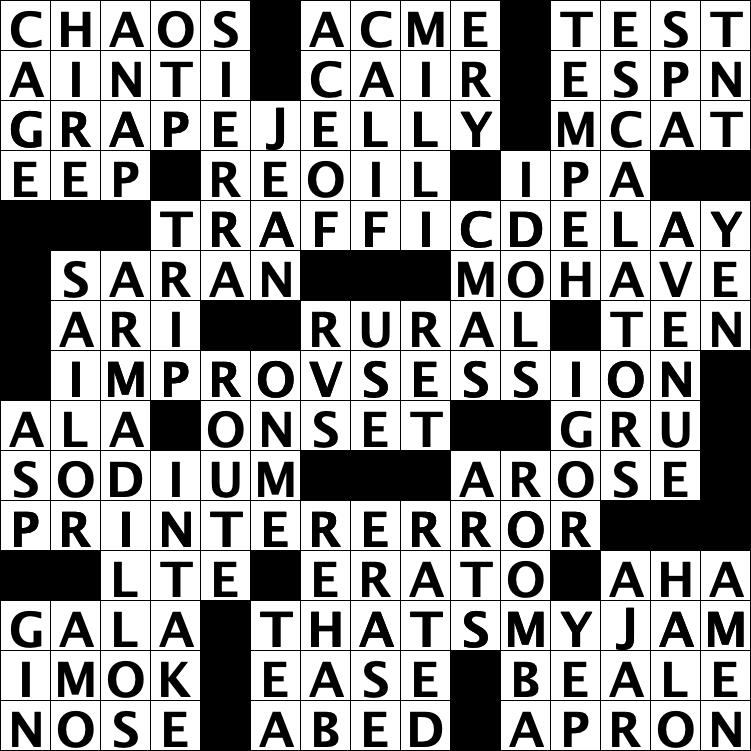
“unsupported and unwanted by an institution that [she] wanted to be at so bad.” Following the 2021-2022 academic year, she re turned to Pitzer in fall 2022 with hopes of overcoming her chal lenges with the SDRC. Afer a week of classes, she was not pro vided with accommodations or her computer reading program and decided to leave the Clare mont Colleges.
Hubbard’s story is not an iso lated one at the Claremont Col leges. For a collection of schools that preach inclusivity, the Clare mont Colleges are neglecting an
entire group of past, present and future students by not adequate ly funding the SDRC. Education al equity means that all students are supplied the resources and support they individually need to succeed. In an educational ly-equitable space, that means resources for success across race, gender, ethnicity, language, dis ability, family background and/ or income brackets.
First and foremost, students with learning disabilities de serve and are entitled to work with trained professionals rather than the students who currently
make up most of SDRC staf. The space is also in need of more technology to assist processes such as scanning textbook pag es into reading programs. Ad ditionally, the cooperation be tween the SDRC and professors needs institutional enforcement: 504 plans must be honored and students should not have to wait until the end of the two-week “shopping period” to receive ac commodations.
Also, a comprehensive out line of the SDRC’s resources must be available online because prospective students, like high
school senior-aged Hubbard, de serve to know how the 5Cs actu ally accommodate students before they commit to atend. Brae Hub bard should be the last student to leave because of issues receiving accommodations — but unless the Claremont Colleges commit to properly funding, properly resourcing and properly valuing the work of the SDRC, there’s no guarantee she will.
Annika White PZ ’25 is from South port, Connecticut. She enjoys hiking, journaling and making playlists on Spotify.
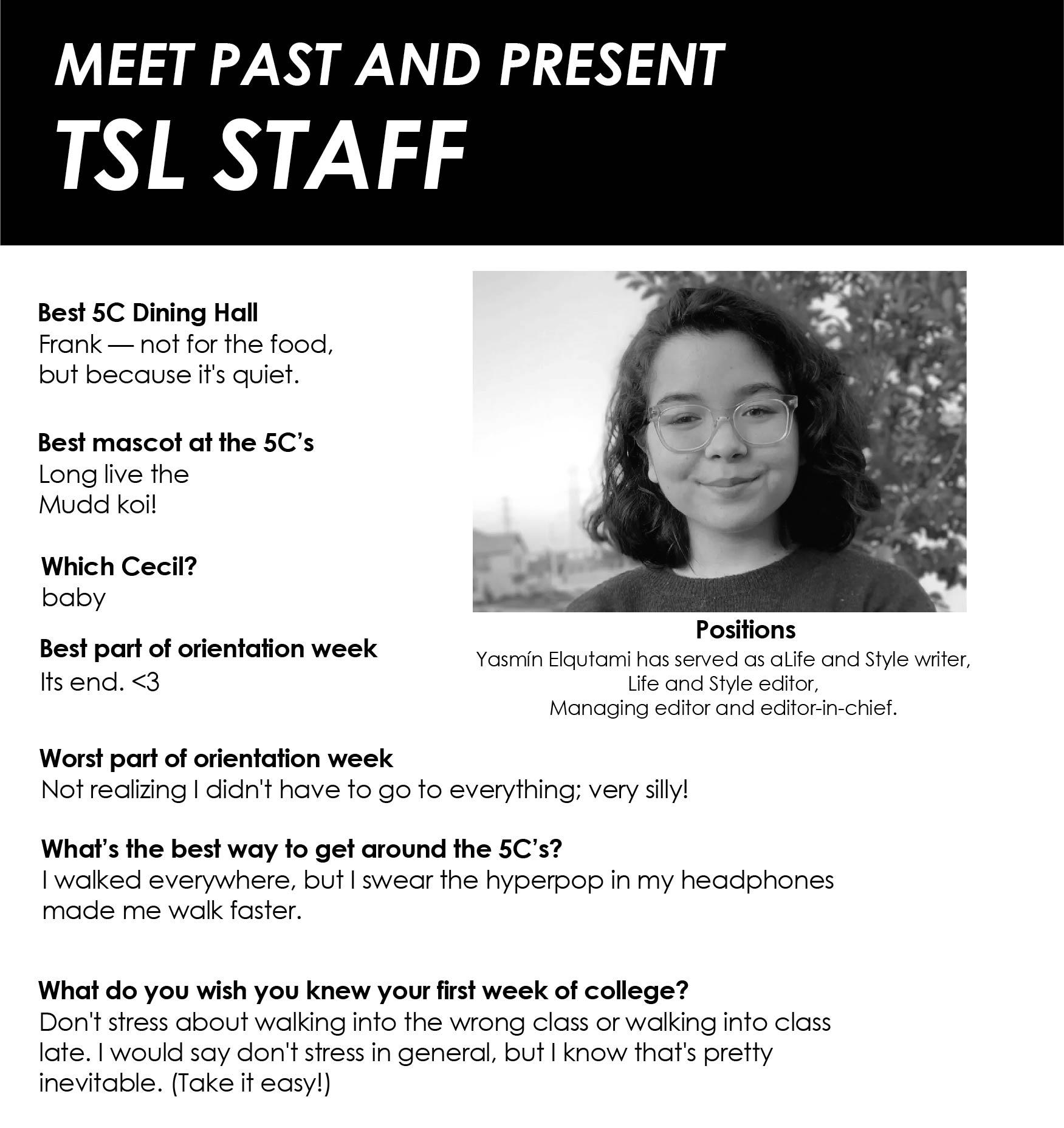 KAtHerINe tAN • tHe StUDeNt LIFe
KAtHerINe tAN • tHe StUDeNt LIFe
pAGe 8 September 30, 2022Opini O ns Jasper’s Crossword: Level up ACROSS 1. ___ twigs (singer) 4. What some wire contraptions massage 9. “Crying In ___” (Michelle Zauner memoir) 14. “Ruh roh!” 15. Plastic Coke botle size 16. A litle zest, so to speak 17. Approaching (in a car) 19. Goop at the Kids’ Choice Awards 20. *Honor for a recently de ceased royal 22. Frequent car dealership event 23. Ferrigno who played the Hulk 24. Charlie Chaplin nickname 28. *Easy targets 33. Sufx for capital or chem 36. One end of a lemon? 37. Island near the Statue of Liberty 38. Amy on Parks and Recre ation 40. Suddenly shows up 42. Engage in a debate 43. Foot or pound 44. Baldy and St. Helens, briefy 45. *Annoying coworker’s ofce setup 49. Shared a tune 50. Khan of Khan Academy 51. “Let It Go” singer 55. *Seed pods with a larva inside 60. Egyptian god with a name sake Eye 63. Uniform for an X-ray 64. Oscar or Tony 65. Class assignment 66. Vid. game in San Andreas 67. “Bye for now!” 68. Doesn’t move 69. Sixth sense DOWN 1. “I have all the ___” (“This is overwhelming”) 2. Black-ish creator Barris 3. Fools’ time of year 4. UC Santa Cruz mascot, for one 5. Field for the Mets 6. “I couldn’t touch her with ___ foot pole” (Toby Keith lyric) 7. Accidentally revealed 8. It’s in the nucleus 9. Where a parasite chills 10. H2O, but not H or O 11. A buddy in Bordeaux 12. Car engine stat. 13. ___ Ohio State University 18. Singles 21. Leo’s mo. 25. Happy as ___ 26. Avoid (the rules) 27. [I am a snake!] 29. Sat, in a car 30. Certain number of formaggi 31. The Blue Jays, on a scoreboard 32. Academic subj. groups 33. “Skip me” 34. In a way 35. ___ and Sara (indie pop duo) 39. Reason for a mistrial 40. Smoke ___ mirrors 41. Fall pumpkin pastry 43. “___ Beatle” (Google search that will bring up Ringo) 46. Sufx for social or symbol 47. Italian city near Vesuvius 48. You can do it with a goal or a gate 52. Like Cliford, compared to a normal dog 53. Braty kids 54. Very easy, say 56. Organic-certifying org. 57. Org. that just few a ship into an asteroid... for funsies ig??? 58. Aussie’s greeting 59. San Francisco and Monterey, for two 60. Possesses 61. Be in debt 62. Issa on Insecure LAST WEEK’S ANSWERS JASper DAVIDOFF • tHe StUDeNt LIFe
ANNIKA WHITE
THE CLARGUMENT In our new feature, we ask TSL’s Instagram followers a question every Monday and share their responses here. What’s the best meme page at the 5Cs? To weigh in on next week’s question, follow us on Instagram @TSLnews and keep an eye on our story on Monday! If you have a suggestion for a future question, send us an email: opinions@tsl.news. duh @claremont.cumstain tipsyscrippsie my queen @erindvdsn Claremont Cumstain, Tipsy Scrippsie. That’s it @johnnchoi makeupa5cman (on Twitter) @allyhyj eLLA LeHAVI • tHe StUDeNt LIFe
Sagehen soccer topples Redlands Bulldogs 4-1 to remain undefeated in conference play
“Henergy” flled the air when the Pomona-Pitzer women’s soc cer team defeated the Redlands Bulldogs with a decisive 4-1 vic tory on Wednesday.
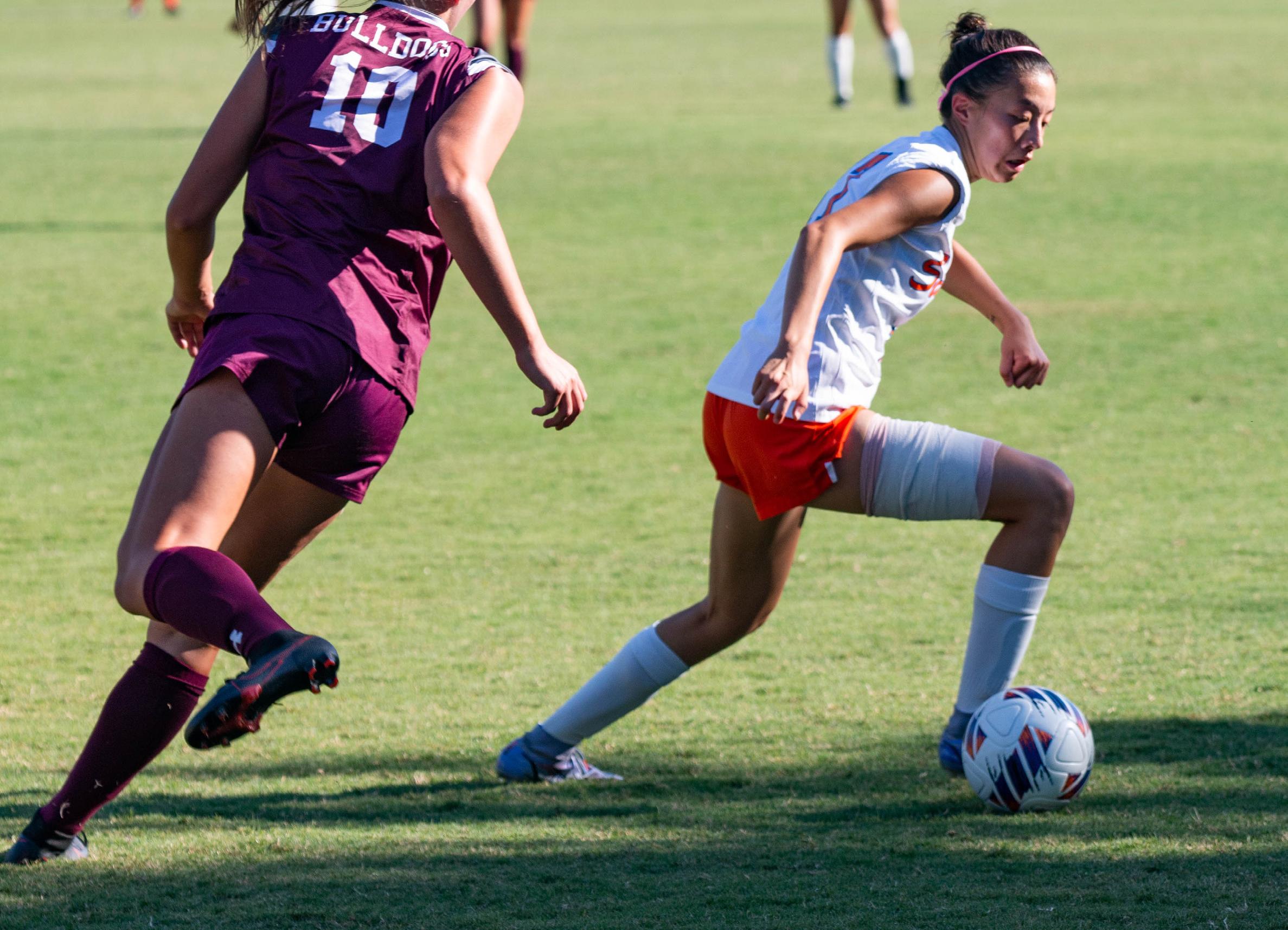
The Sagehens had been pre paring for this game the week pri or knowing the stakes were big ger than many of their previous games. Lotie Dierks PZ ’26 said that because it was a SCIAC home game against a ferce opponent, the team had high expectations for themselves.
“We’re all really excited and motivated going into the game,” Dierks said. “Although we won on Saturday, we still haven’t seen our best potential yet because we haven’t been pushed there. We’re really looking forward to playing a bigger competitor and we want to prove we’re up for the chal lenge.”
They proved so by scoring two goals in the frst 35 minutes of the game.
The frst goal began with a run from Hannah Mandell PO ’23 who dribbled the ball to the end line just right of the Bulldogs’ goal. Mandell then cut back and served a cross into the box. Kend rick Dahlin PO ’26 was in just the right spot and volleyed the ball to fnish.
Only fve minutes afer the Sagehens got on the scoreboard, they did it again. This time, Eliana Prosnitz PO ’25 was the catalyst. She ripped a shot outside of the box and an atempted defection from a Redlands defender guided the ball into the back of the net, lifing the Sagehens lead to 2-0.
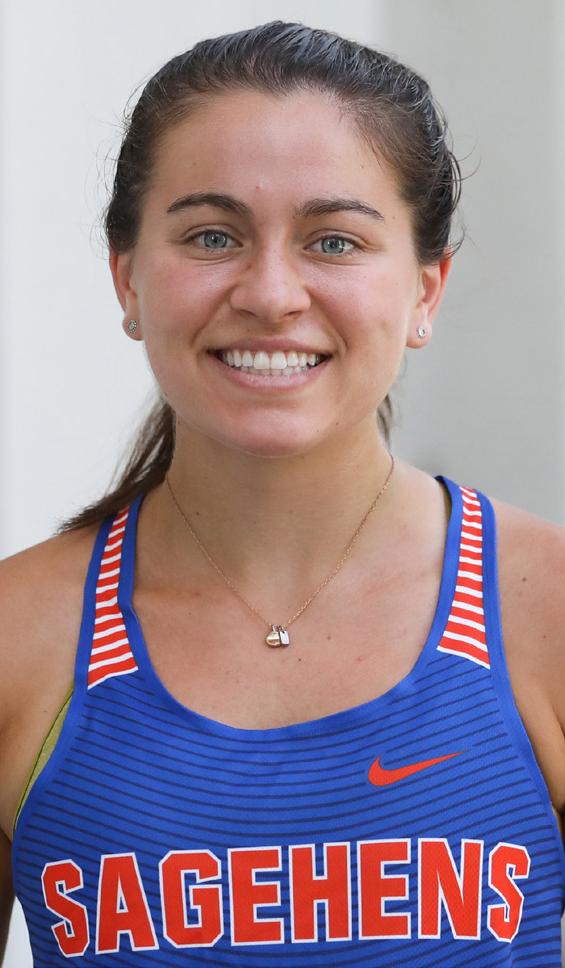
During their Tuesday practice before the game, the Sagehens discussed their goals for the next day. Anjuli Turner PZ ’25 said that the team would focus on en ergy and defense.
“We had a talk about geting the ‘henergy’ up,” Turner said. “We also talked about geting more pumped for games in gen eral, and we discussed focusing on the smaller stuf because that’s what counts. As for specifcs, we have a goal to not get scored on at home.”
Overall, the Sagehens lived up to their expectations. They dom inated the Bulldogs throughout the frst half and held possession for most of it. A palpable energy fueled their play, and they had multiple chances that missed just wide. However, the Sagehens fell short of their hope for a shutout.
In the 44th minute, just before the end of the frst half, the Bull dogs scored, slipping a shot into the corner of the Sagehens’ net. The frst half ended 2-1, with the
Sagehens in the lead.
This season, the Sagehens have consistently implemented a “half-and-half” goalkeeper strategy, spliting each game be tween two players. Wednesday’s game continued that trend, as coming out of halfime, Taylor Kane PZ ’25, subbed in for Nao mi Meurice PO ’25.
This move did not come into play for some time, however, as the second half began with the two teams batling it out at midfeld. Although the Bulldogs hoped to use the momentum of their frst goal by moving the ball downfeld, they only man aged two scoring atempts, both of which ended with the ball sailing wide of the goal.
This strong defense allowed for P-P to push into Redlands territory, earning a corner kick. Unfortunately for the Sagehens, this opportunity to extend their lead turned up empty, as they returned the ball to the Bull dogs, giving them a chance to tie the game.
Taking the ball past midfeld and nearing the P-P goal, a Red lands player entered a one-onone situation with Kane. In a
heads-up move, she ran straight at the ball, diving on it and pre venting even an atempt at a shot.
“For all three goalies on this team, we have this mentality,” said Kane. “It’s our box, it’s our [18-yard line]. We’re gonna go for everything. Come in strong, do our job and take care of our space.”
This stop seemed to swell up momentum among the Sage hens, as not long afer, the ball returned to the feet of Prosnitz. Just past midfeld, Prosnitz saw an opening and took it, knock ing herself over with a booming kick arcing just over the head of the Bulldogs’ keeper.
“As I was falling, I was like, ‘Please, God,’ honestly,” Pros nitz said. “It was a bit lucky I think, but just having the con fdence to take those shots is something I’ve been working on.”
Following the score, P-P dominated possession time. In the second half, the Sagehens outshot the Bulldogs 13-1, many of which were near misses in the wake of Prosnitz’s goal.
Even though the Bulldogs
Athletes of the Week
Pomona-Pitzer
DiBari PO ’24 earned the SCIAC Athlete of the Week title after a stunning performance in last week’s
DiBari finished in ninth place individually at the Cougar Challenge in San Marcos, and she helped lead Pomona-Pitzer (P-P) to place fourth overall. This was an especially impressive rank for the Sagehens, as their com petition consisted primarily of Division II schools. Their performance at this meet, and DiBari’s contribution, helped bump the Sagehens’ women’s cross country and track team up two spots in the NCAA national rankings to earn a spot in the top 10.
Claremont-Mudd-Scripps
Eric Sanchez CM ’24 was a hero for the Stags on Wednes day, Sept. 21, when he scored two of the four total goals in CMS’s definite win over Chapman. Sanchez’s goals were scored within 61 seconds of each other in the second half and started with assists from Jake Allmon CMC ’23, who also scored a goal of his own. The first goal was scored in the 62nd minute of the game, with a give-and-go set up to allow for Sanchez to shoot from the center of the penalty area. The second came soon after, in the 63rd minute. San chez spun past a defender in the box to get a clear shot that flew to the back of the net to secure his second goal of the game. Sanchez’s brace was a key factor in securing victory for the Stags.
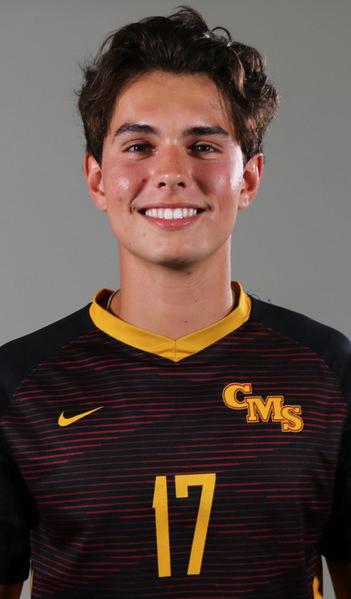
looked all but put to rest, they managed a last-gasp atempt at a comeback. Puting some seri ous pressure on the Sagehens, Redlands looked poised to at least cut the lead to one, but this was ultimately futile. As the Bulldogs sent a pass that would’ve set up a point-blank shot from in front of the goal, Kane dove and smacked the ball out of harm’s way, solidifying her 45-minute shutout.
“Going into the second half, the whole team came in with a strong mentality of keeping our game together and playing our game,” Kane said. “[I was] playing hard on defense and ev eryone was there with me, keep ing it all together until the last whistle.”
To add insult to injury, Mel anie Ng PO ’25 iced the game in the 88th minute with her frst goal of the season to fnish of the game 4-1.
Just like the game’s defen sive star, Kane, its ofensive standout, Prosnitz, came of the bench. The midfelder em phasized the importance of the Sagehens’ second team in their game plan.
“This game was really import ant because we’re playing the top of the table, Redlands,” Prosnitz said. “Being a substitute and com ing in and changing the game is really something important on our team and one of our team val ues. To be able to execute that for my teammates was really special. Two goals was just amazing, and it’s been a while since I’ve scored in a game, so it was really fun. [It] feels good to be working hard in practice every week and then making it happen on the feld.”
Wednesday’s victory was the Sagehens’ third in conference play (3-0-1) and sixth overall (61-1). P-P will host Cal Lutheran on Saturday in hopes of keeping their streak alive and taking out right frst place in the SCIAC. As sistant Coach Isa Berardo believes they have the strategy to do so going forward.
“We’re gonna keep playing our game of soccer,” Berardo said. “Try and play possession, atack when we can atack, play smart, play quick and hopefully outrun teams for the full 90 minutes — not give up a single second where we give any teams a chance at a goal.”
pAGe 10 September 30, 2022Sport S
eLLA brADLeY • tHe StUDeNt LIFe ANSLEY WASHBURN & BEN LAUREN
Amanda Khu pO ’25 crosses up a defender on way to a 4-1 victory over redlands. Sports Calendar CMS Friday, Sept. 30 Women’s golf @ Whittier men and Women’s Cross-Country @ paul Short run men and Women’s tennis ItA Fall regionals men’s Water polo Vs pepperdine and Fresno Pacifc Women’s Volleyball @ Cal Lutheran Saturday, Oct. 1 men and Women’s tennis ItA Fall regionals men’s Soccer @ Caltech Women’s Soccer Vs. Caltech Football @ La Verne men’s Water polo Vs Air Force and Johns Hopkins Sunday, Oct. 2 men and Women’s tennis ItA Fall regionals Women’s Soccer @ UC Santa Cruz P-P Friday, Sept. 30 men and Women’s tennis ItA Fall regionals men’s Water polo @ La Verne Vs pepperdine Women’s Volleyball @ Occidental Saturday, Oct. 1 men and Women’s tennis ItA Fall regionals Women’s Soccer Vs Cal Lutheran men’s Water polo Vs Redlands and Pacifc Women’s Volleyball @ La Verne men’s Soccer @ Cal Lutheran Football @ Chapman Sunday, Oct. 2 men and Women’s tennis ItA Fall regionals
Eric Sanchez CMC ’24 San Juan Capistrano, CA Men’s Soccer Genevieve DiBari PO ’24 Bethesda, MD Women’s Crosscountry Genevieve
meet.
